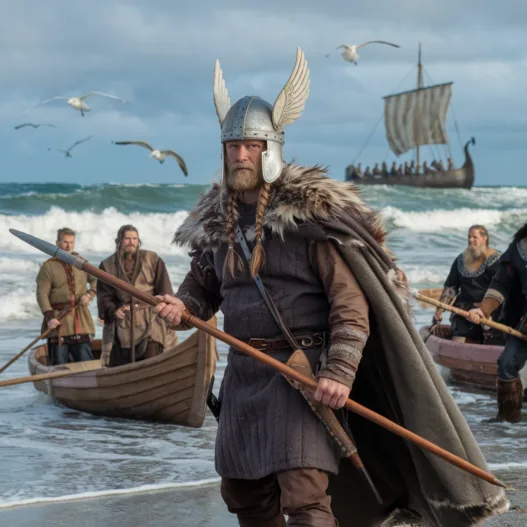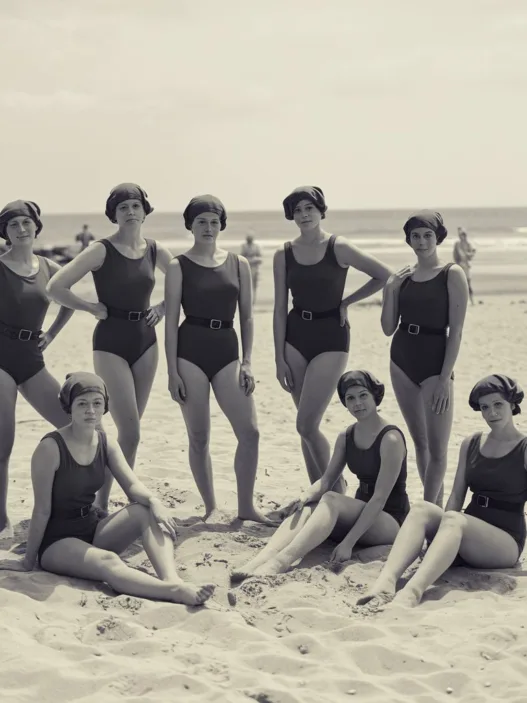When we think of Vikings, we envision gigantic, blond barbarians destroying everything in their way. However, the Vikings were not terrible killers; rather, they were civilized and complex people.
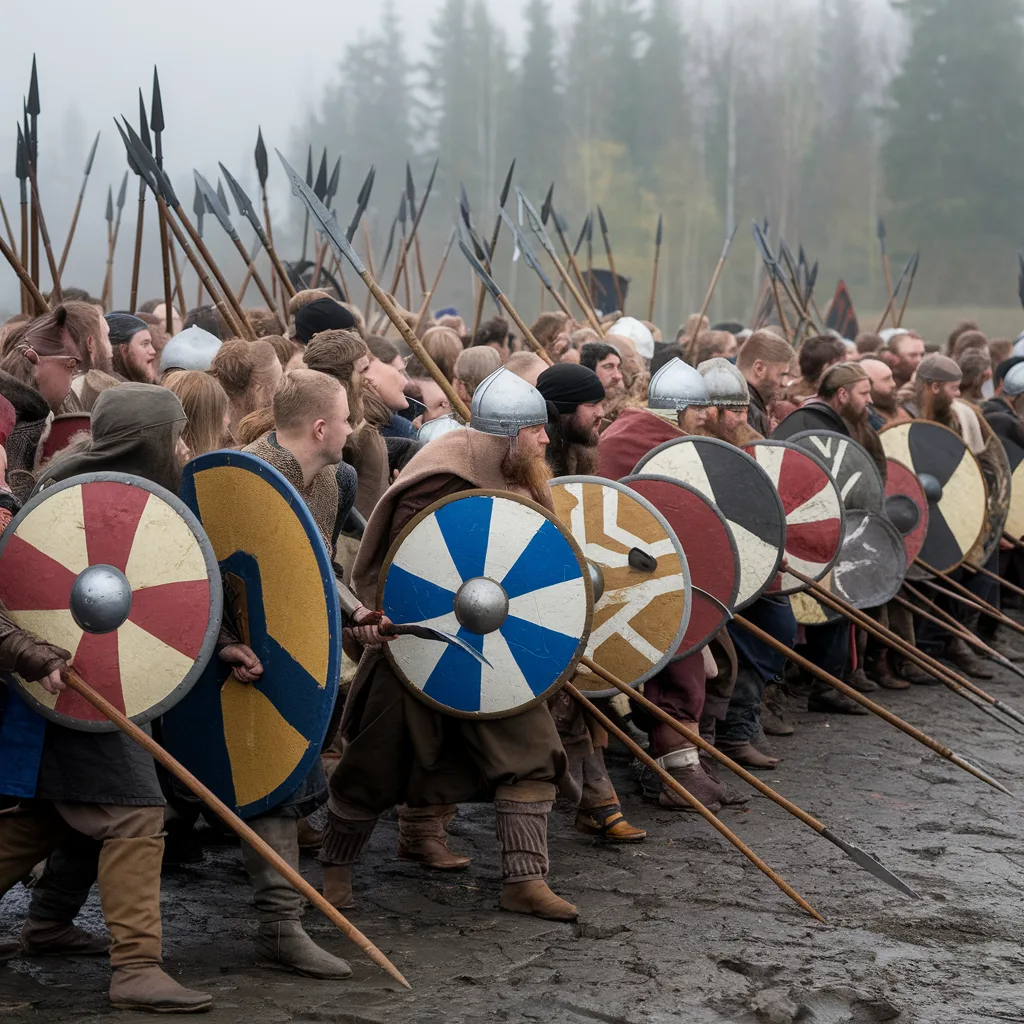
Vikings have been misunderstood for centuries, but recent DNA discoveries have revealed the real truth behind Viking culture, allowing you to separate legend from reality finally. Get ready to throw out everything you thought you knew about Vikings because we’re about to debunk the myths you’ve come to believe!
Vikings Didn’t Stick to Europe
We mentioned that Vikings discovered North America 500 years before Christopher Columbus and traveled to Constantinople, with archeological evidence and medieval sagas indicating that they crossed the Tigris River to Baghdad.
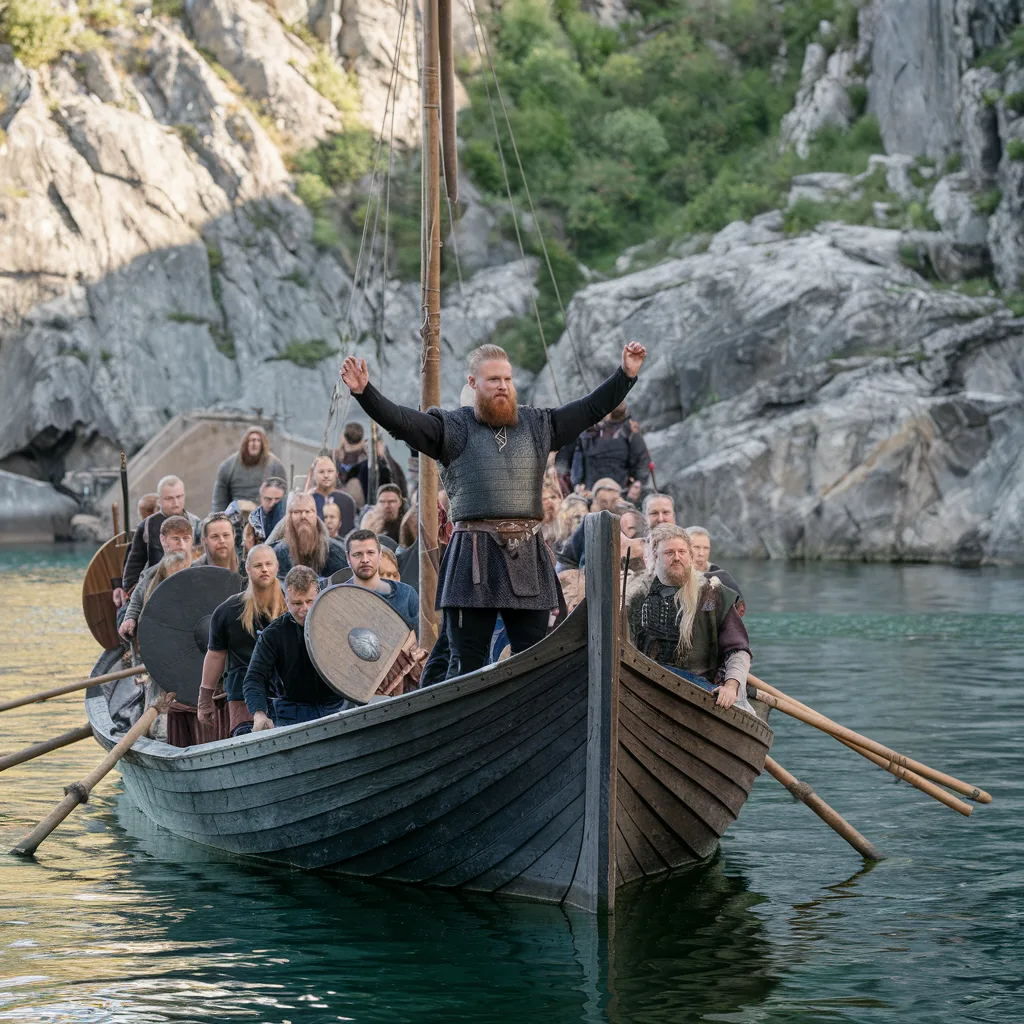
Many expeditions were exploratory trips or raids, and the majority of their colonization occurred in the Northern Hemisphere. Because they interacted with so many locations, the Viking world was vast and diversified.
Vikings Weren’t Part of a Unified Group
Although the Vikings lived in cohesive communities, they did not recognize their fellow Vikings. In truth, they did not even call themselves Vikings; the word referred to all Scandinavians who participated in overseas excursions.
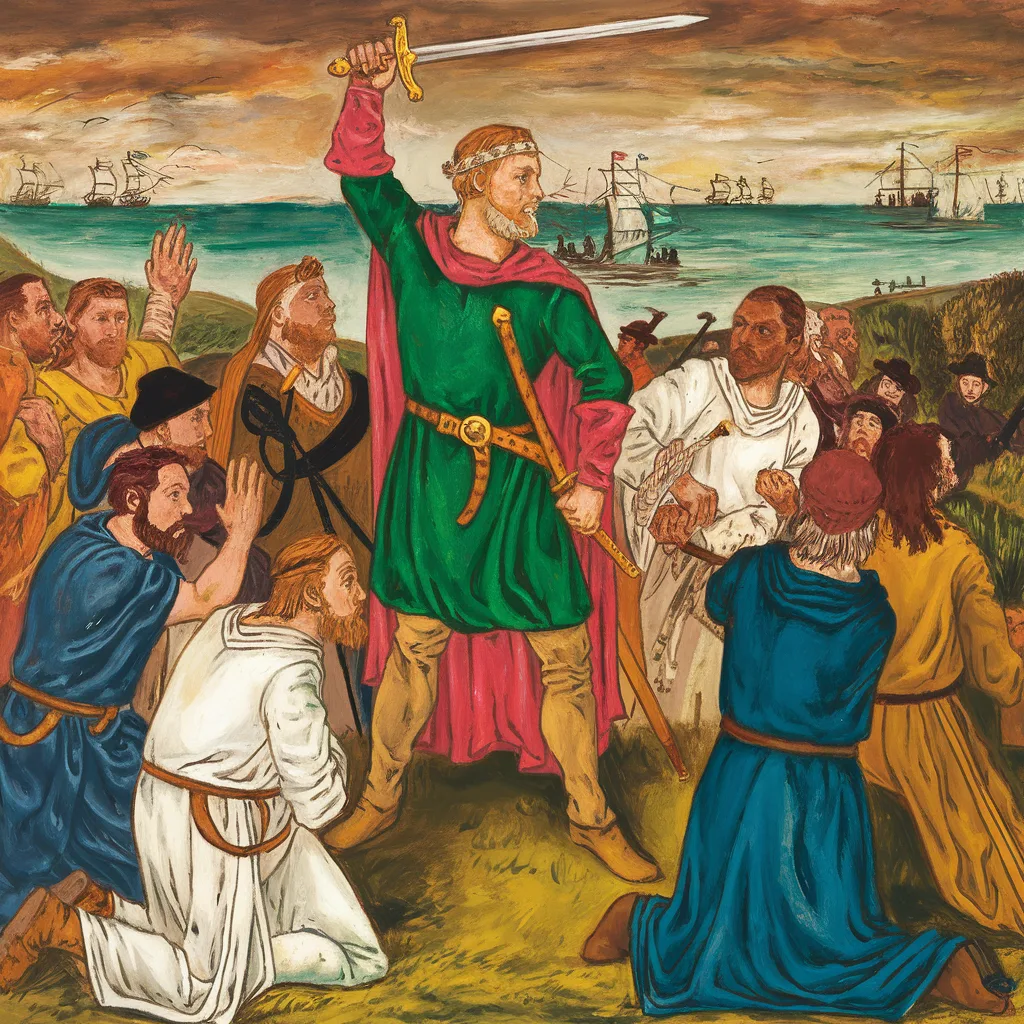
During the Viking Age, the territory that is now Denmark, Norway, and Sweden was a patchwork of chieftain-led tribes who frequently fought one another when they weren’t wreaking devastation on distant beaches. They rarely raided together since they disliked sharing.
Vikings Took Hallucinogenic Before Battles
Before major conflicts, Vikings drank hallucinogenic herbal tea, which made them extremely aggressive and relieved pain as they charged into combat. The fiercest were known as berserkers, and they’d charge into battle, hacking anyone in their way. However, when they went home, they had run out of energy and would be fatigued for days.
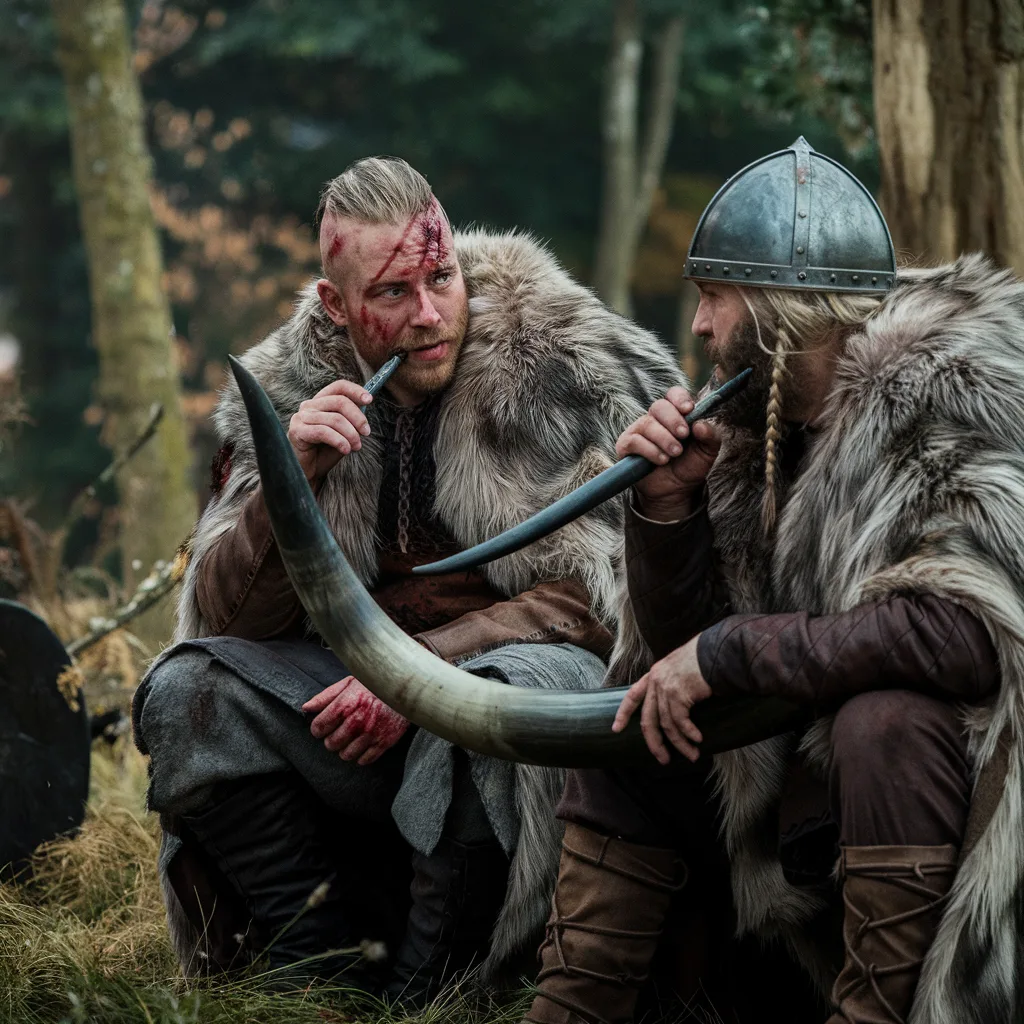
It is thought that they prepared tea from a strong herb and drank it with wine or applied it to their skin with goose fat. There’s also a theory that they ate a unique type of “magic mushroom” that had psychedelic characteristics.
“Blood Eagle” May Have Been a Myth
One of the most common myths about Vikings is that they were ruthless, with “blood eagle” being their most heinous form of torture. Blood eagle is a type of execution in which Vikings detach a person’s ribs from their spine, dragging their bones and flesh outward to form a pair of “wings,” and removing their lungs from their chest cavity.
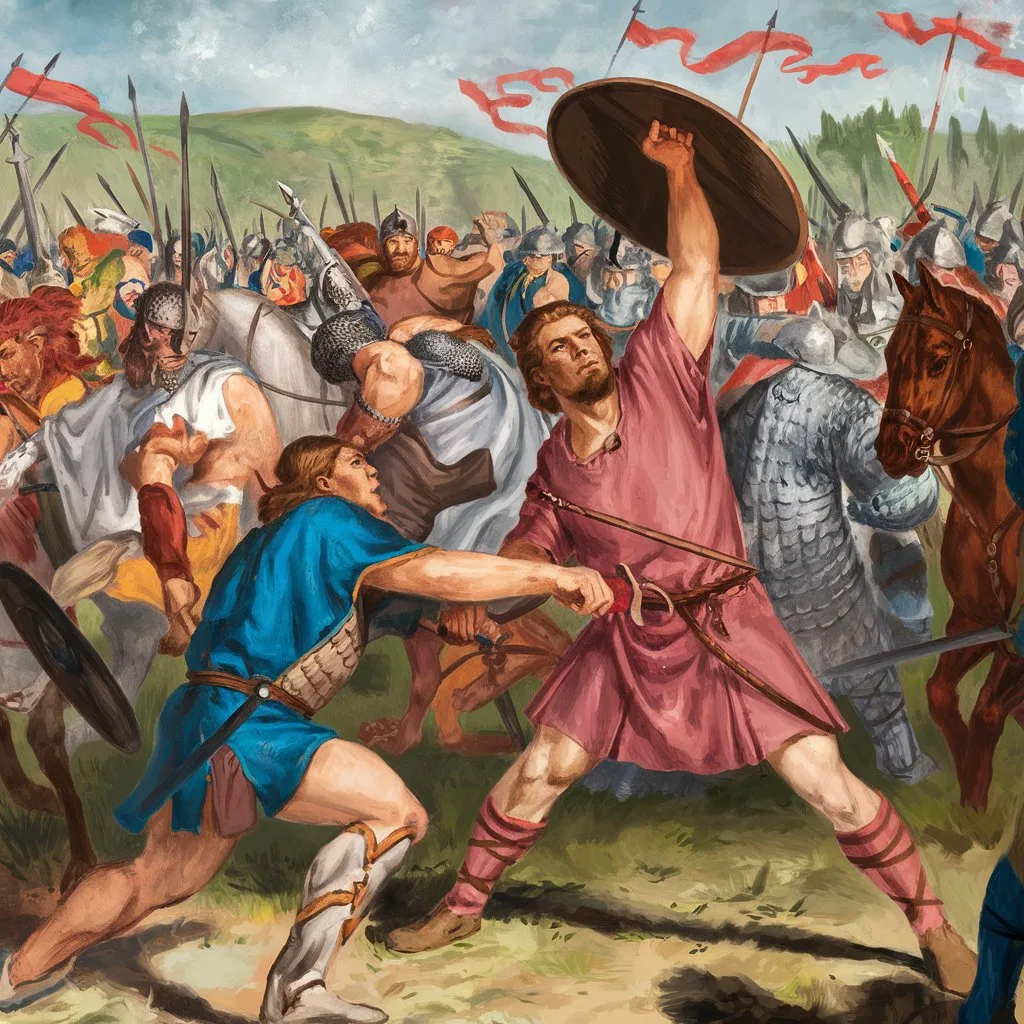
While it appears in television shows and movies, academics have long questioned whether it happened or was a literary cliche. A corpse with this form of torture has yet to be uncovered, thus it is unclear whether the blood eagle occurred.
Vikings Enjoyed Skiing
The earliest known skis were unearthed in Russia between 8000 and 7000 B.C., with the first documented reference coming from China’s Han Dynasty (206 B.C.-A.D. 220). However, the Vikings popularized skiing. Even the term “ski” derives from the Old Norse word “skio”.
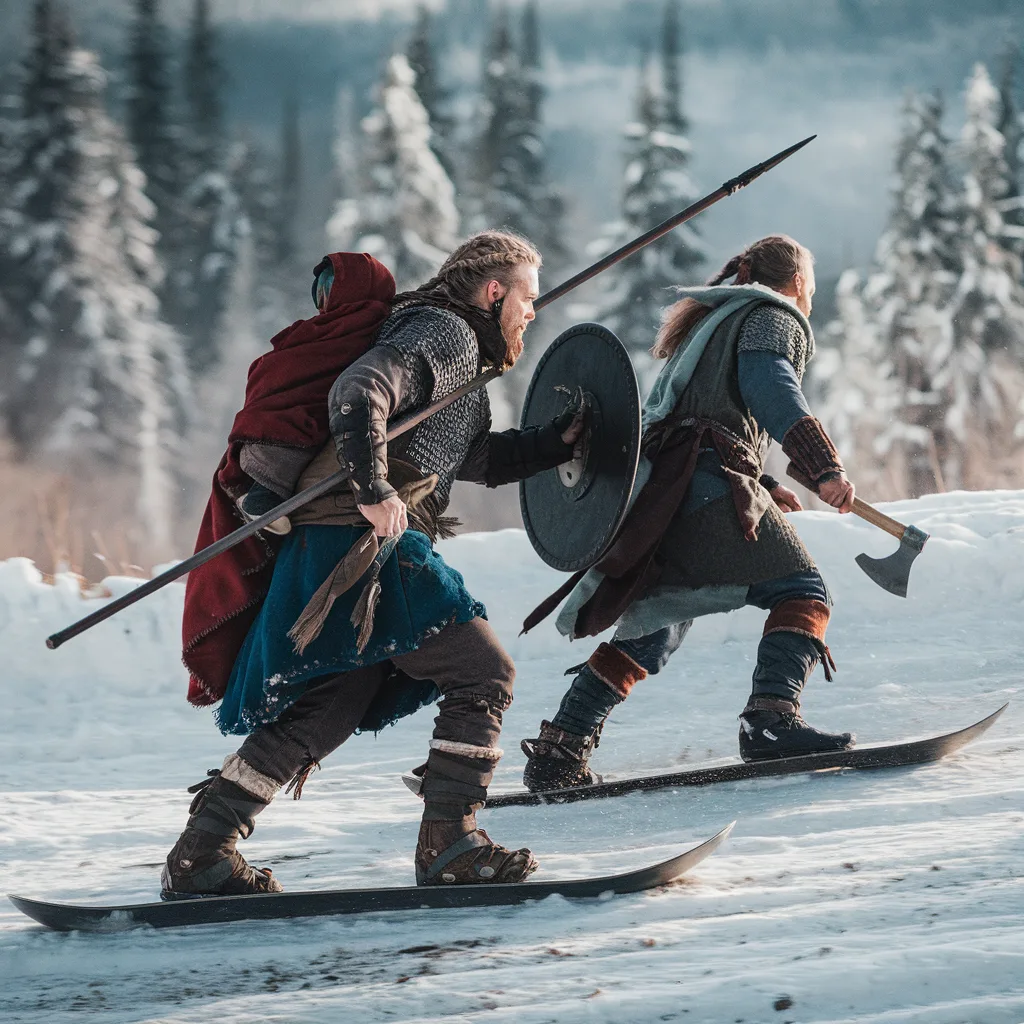
Skiing across their icy homelands was a favorite form of recreation for Vikings, as well as a mode of transportation. They even worshipped the deity of skiing, Ullr.
Vikings Didn’t Drink from Skulls
Vikings are sometimes portrayed as violent and barbaric, drinking from their enemies’ skulls, although this was not the case. Vikings were rather sophisticated, and the idea stems from the glasses they drank from.
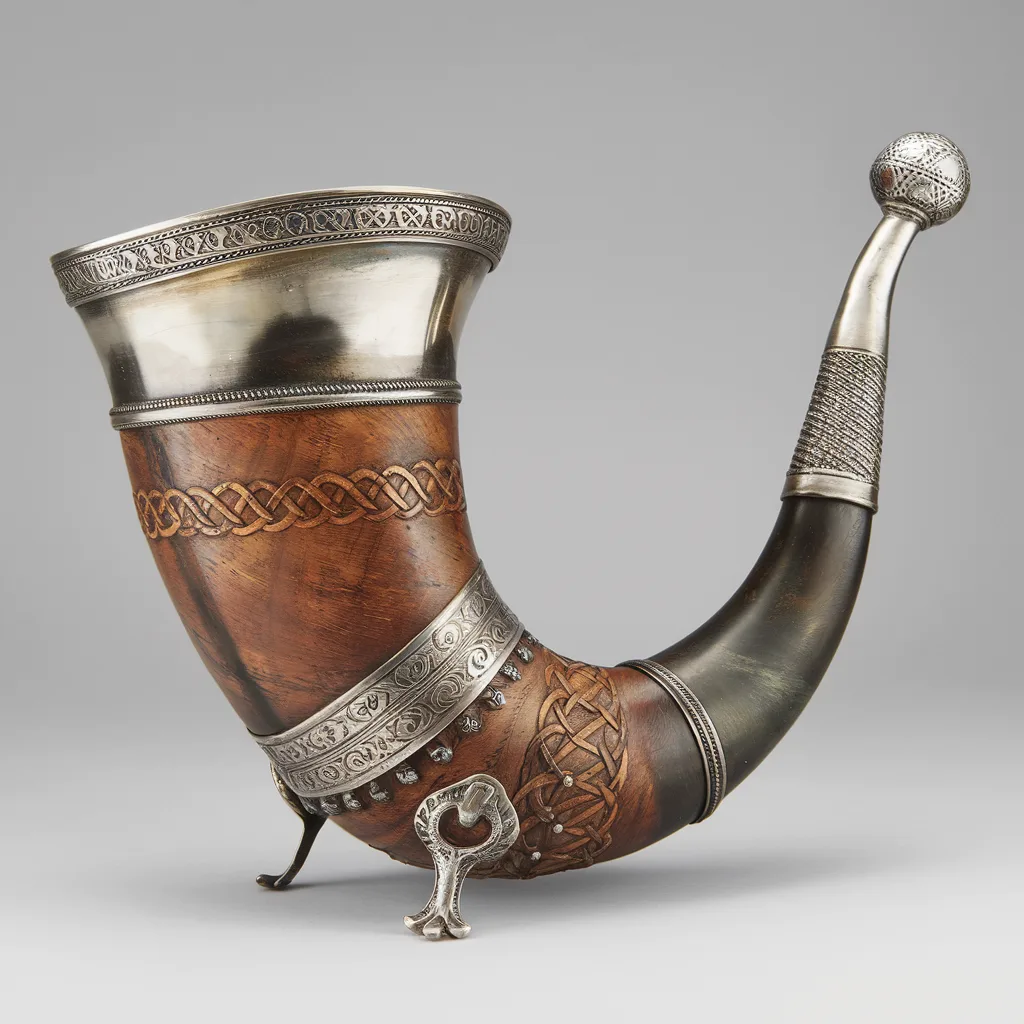
They drank from cattle and goat horns, which they decorated with beautiful metals. Vikings did not drink blood, but they did consume plenty of beer, mead, and wine.
Vikings Filled Their Teeth
Vikings were quite hygienic and took good care of their teeth. They even had tooth fillings, which were uncovered during archeological excavations of severed Viking heads. The men’s teeth were neatly filed with horizontal lines. Their teeth may have been scraped with charcoal or other dye.
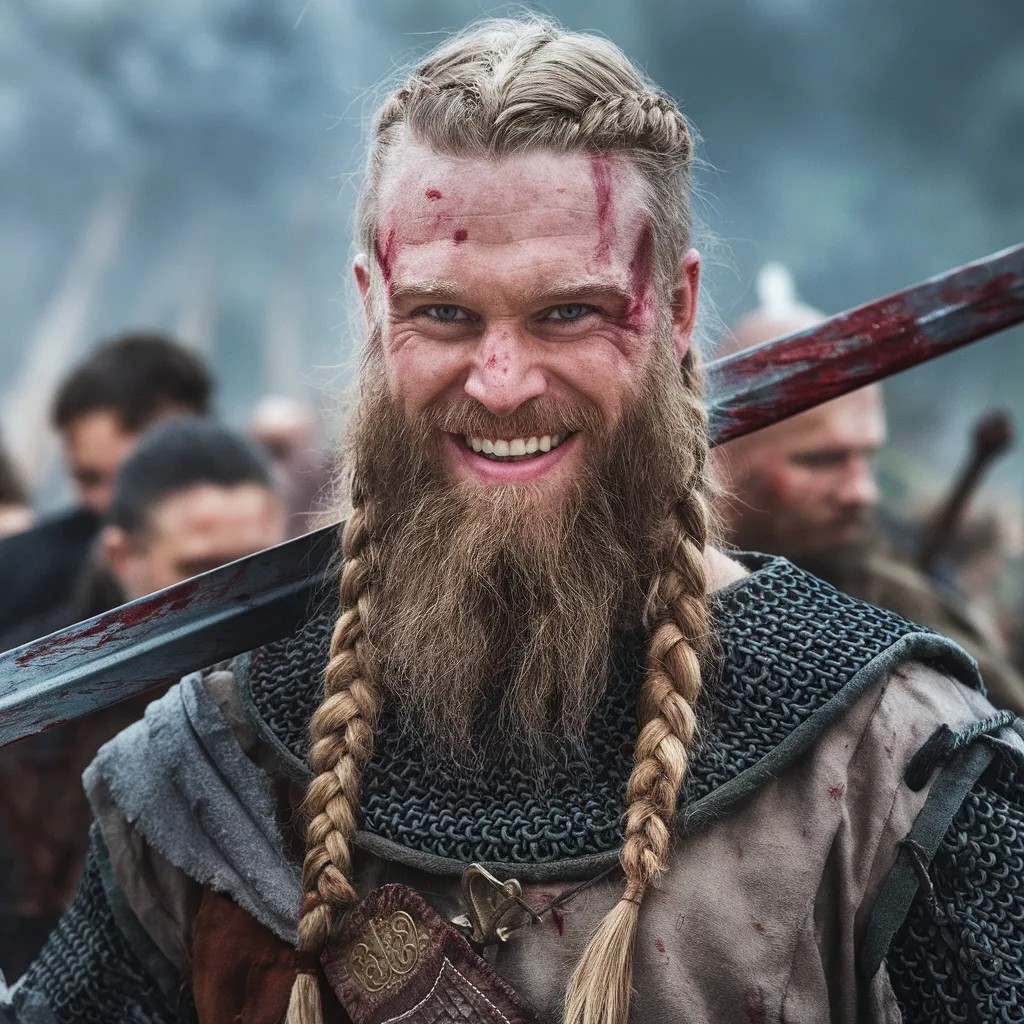
While archaeologists do not know what the files imply, they believe Vikings used them as a status symbol to demonstrate their wealth.
Elite Bodyguards in the Byzantine Empire
Vikings were famed for their epic fighting abilities, therefore it is not surprising that some of them became bodyguards in the Byzantine Empire.
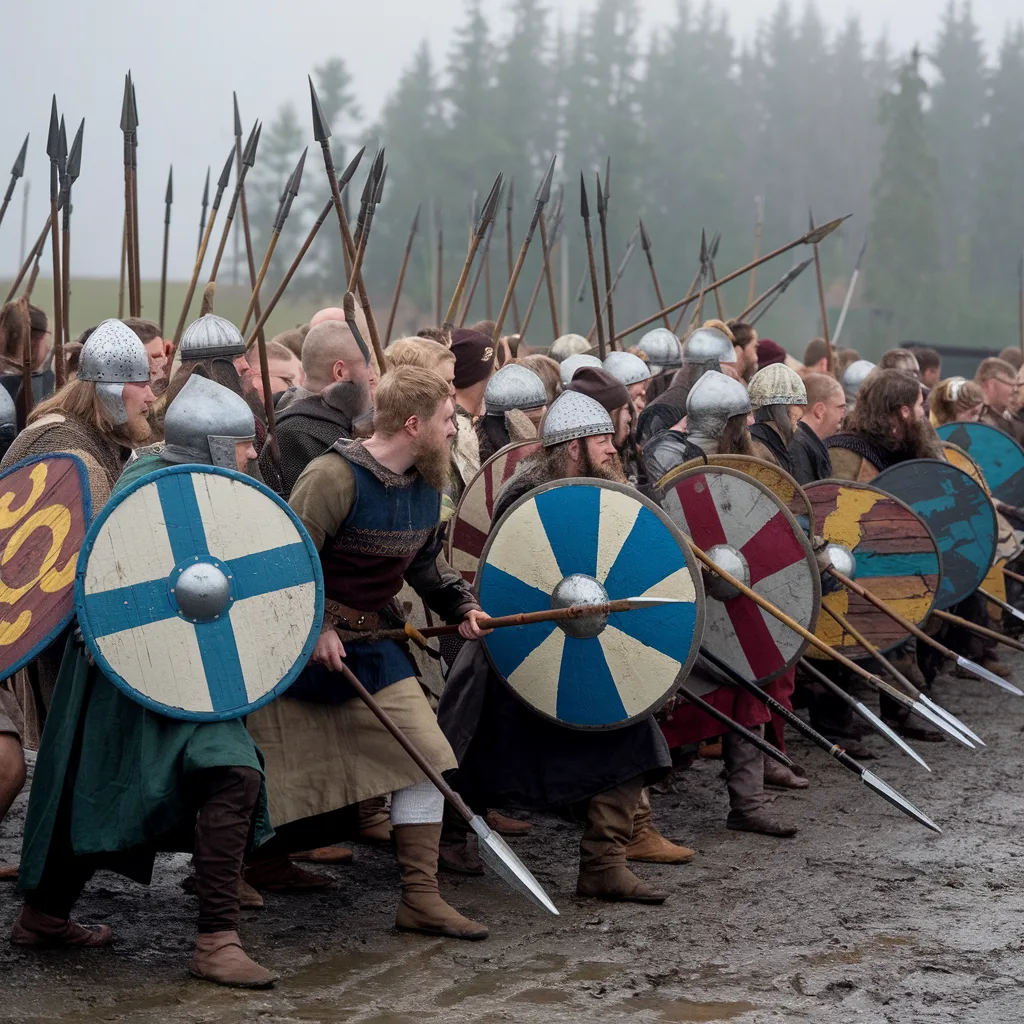
The Varangian Guard was a high-ranking Viking force known for its members’ size and bloodlust. They began protecting Byzantine emperors in the late tenth century. They traveled through modern-day Russia to reach Constantinople. However, by the 1200s, their prominence as emperors’ servants had deteriorated.
Vikings Didn’t Only Eat Meat
There’s no arguing that a Viking diet consisted primarily of meat, but that wasn’t all they ate. They had a well-balanced diet. Vikings spent a lot of time on their farms, thus they had access to grains, fruits, vegetables, and livestock. The animals also produced milk for cheese.
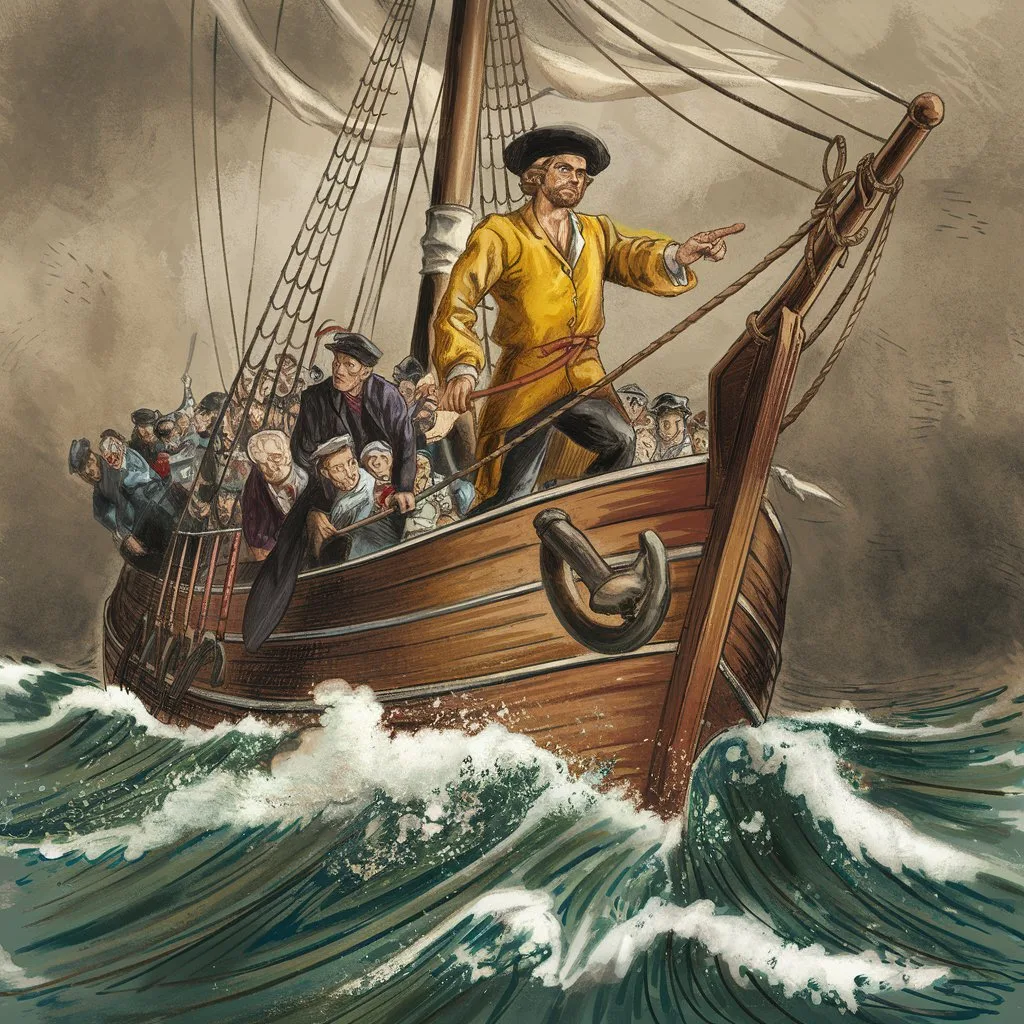
Vikings also enjoyed hunting and fishing, and they ate their catch. They spent a lot of time on the water, and the winter months did not stop them from eating fish!
Vikings Weren’t All Blond
Vikings are often shown as having long blond hair and blue eyes, however, DNA shows that the majority of them were not blond. The bulk of Vikings wore brown hair, not blonde.
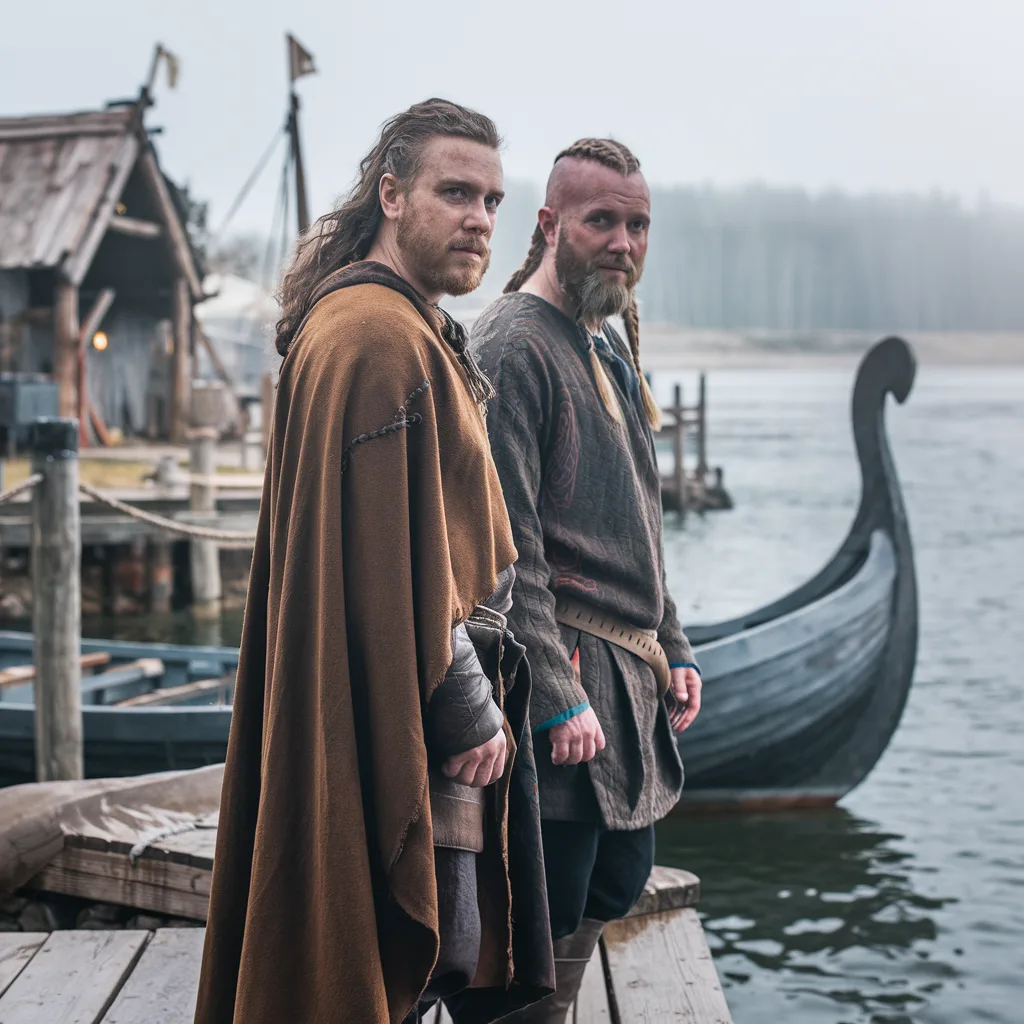
To adapt to their culture’s beauty standards, brunette Viking men bleached their hair with a powerful detergent containing a high lye concentration. Occasionally, their beards were lightened. The dye also had an extra benefit: it killed head lice, which were a widespread problem at the time.
Vikings Cared About Personal Hygiene
Many people believe Vikings were stinky because of their long hair and bushy beards, as well as their rowing boats and murdering of foes, yet this could not be more incorrect. Vikings valued personal hygiene and took pride in self-care.
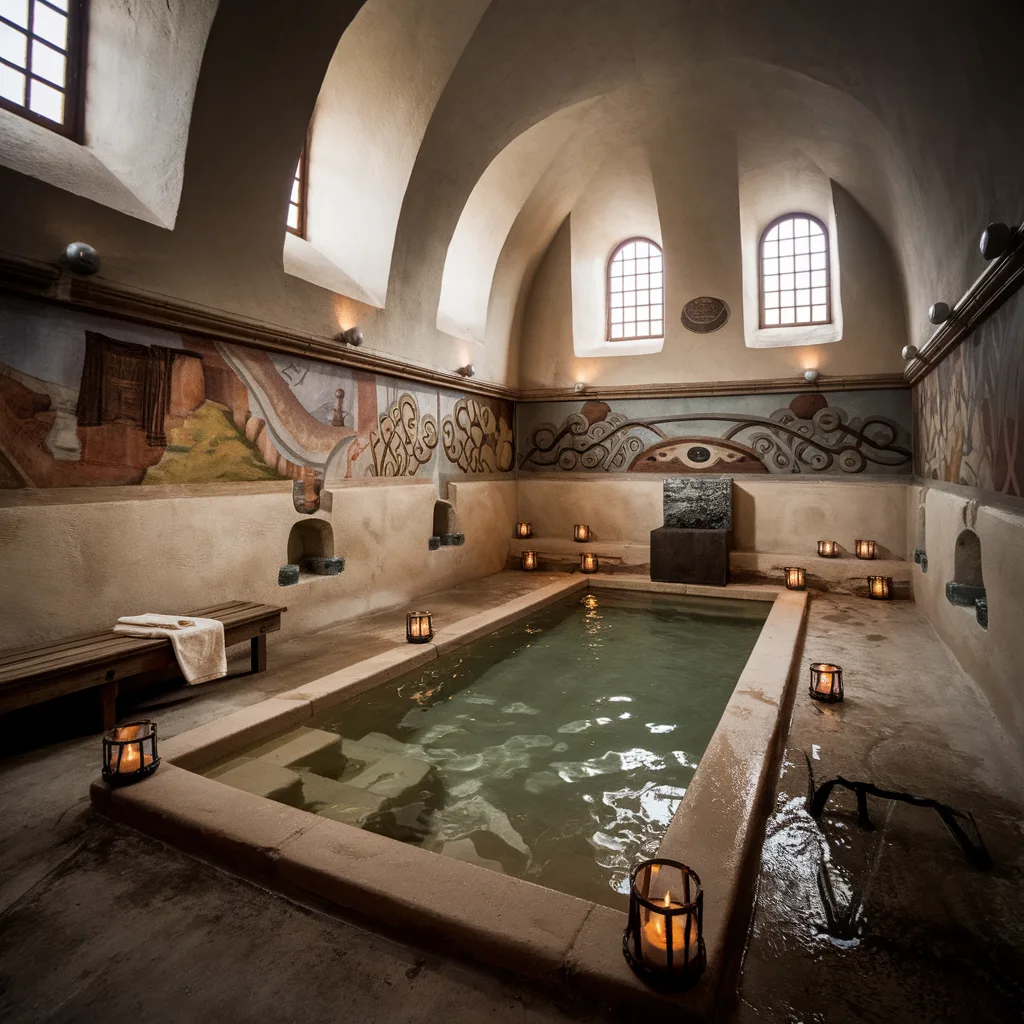
Combs, razors, tweezers, and ear cleaners fashioned from animal bones and antlers have been unearthed at Viking excavation sites. They also showered once a week, which was far more often than other Europeans did at the time, and took baths in natural hot springs.
Farming Over Raiding
While we often connect Viking men with burning communities, they spent more time farming than raiding.
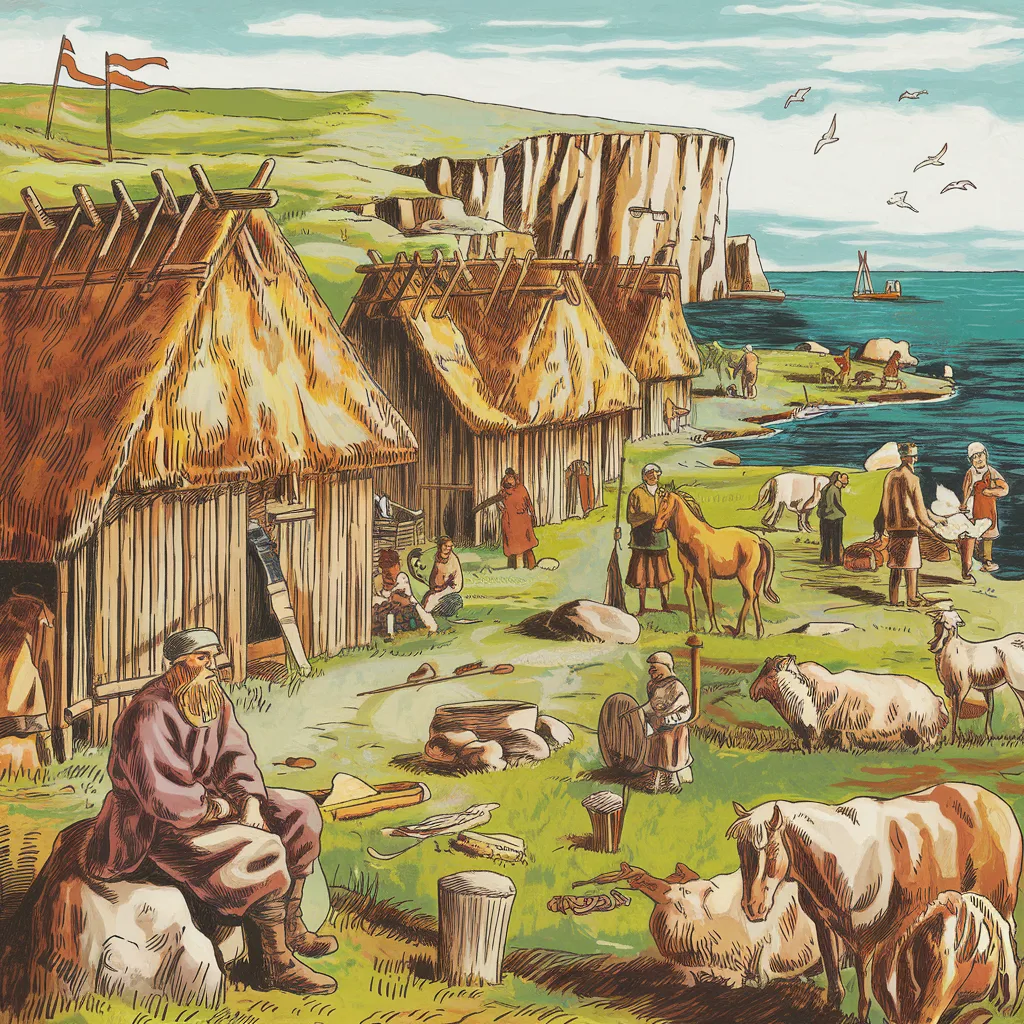
Some Vikings spent a lot of time seeking treasure and fighting, but the majority of their time was spent sowing barley, rye, and oats. They also farmed cattle, pigs, goats, and lambs on their little farms, providing enough food for their family.
Vikings Decorated Swords, Shields, and Ships
There is no doubt that Vikings were proud of their weaponry and relished painting their swords, shields, and ships. After all, they always carried them with them. However, instead of carving terrible images into their weapons, they bedazzled them.
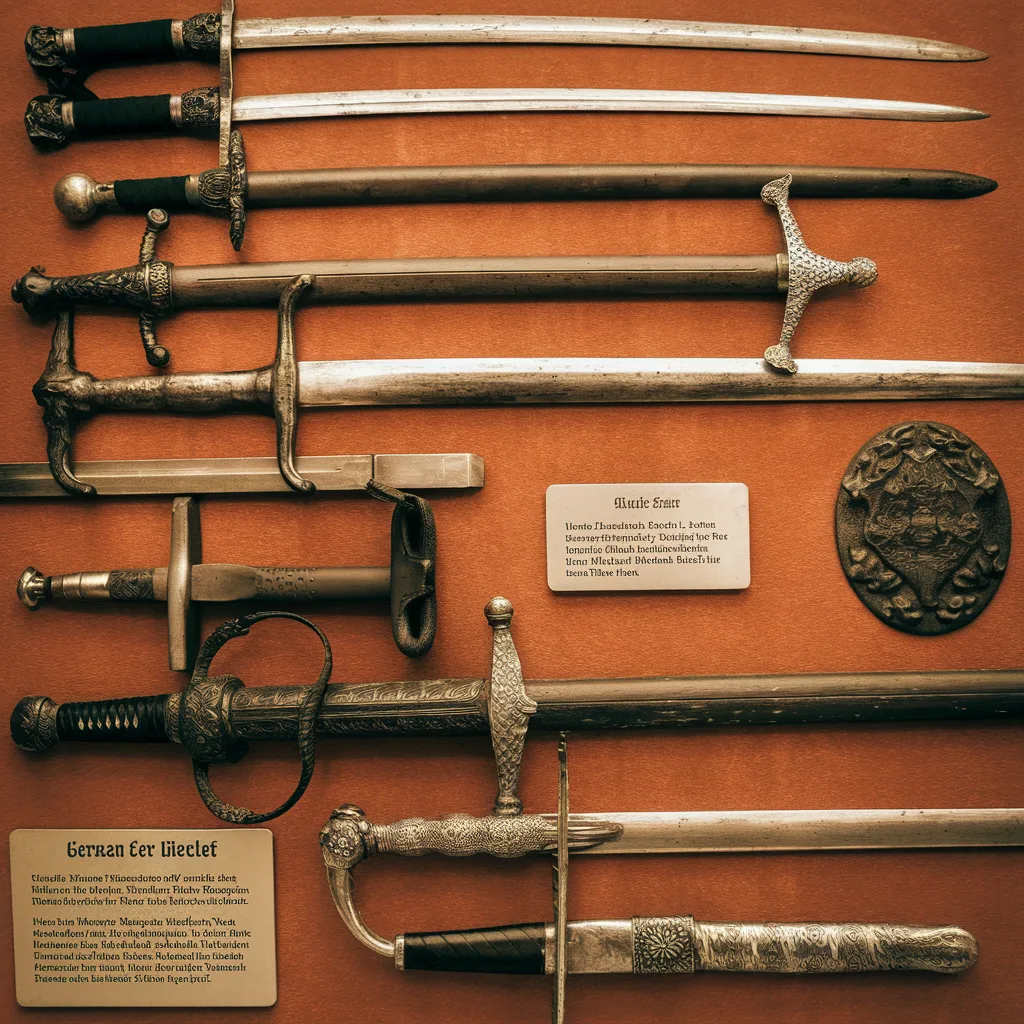
Their swords were extremely elaborate and adorned with gold and silver. They also included geometric designs and images of snakes, horses, and wolves, as well as mythical animals such as dragons.
Vikings Practiced Birthing Rituals
Because of a dearth of medical understanding, Viking mothers and their newborns faced dangers throughout pregnancy and birth. To ensure women’s safety during childbirth, the Vikings used birth rituals.
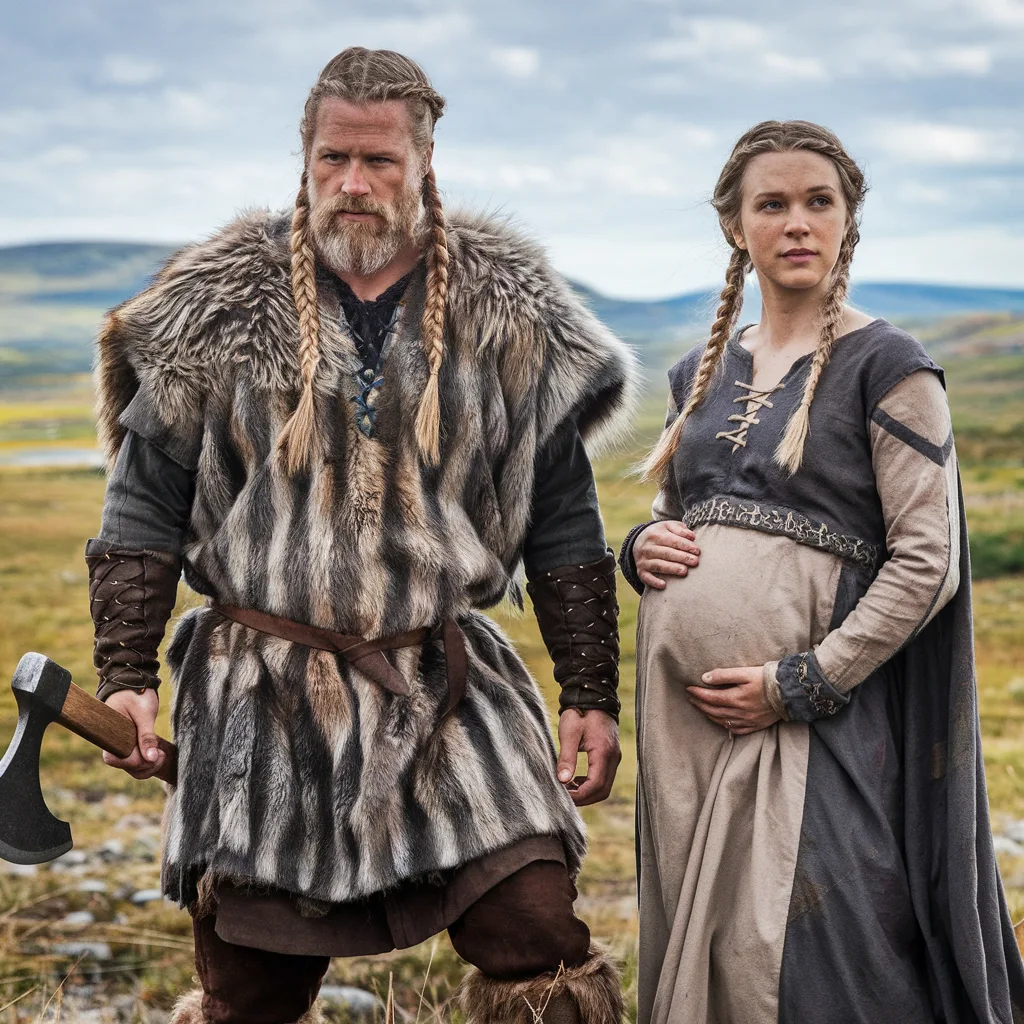
These included praying to the goddesses Frigg and Freyja for protection and performing special magical songs known as galdr-songs. Unfortunately, this “magic” did not always work, and many women died during childbirth, resulting in women having a far lower average life expectancy than men.
Viking Warrior Went Berserk Before Battle
We mentioned that Viking warriors took hallucinogenic tea or magic mushrooms before battle, and there were warriors known as berserkers. They’d enter a trance-like state and act out, become enraged, and roar like wild animals. Berserkers, which means “to change form” in Norse, would fight wearing bear or wolf skins and possessing unearthly abilities.
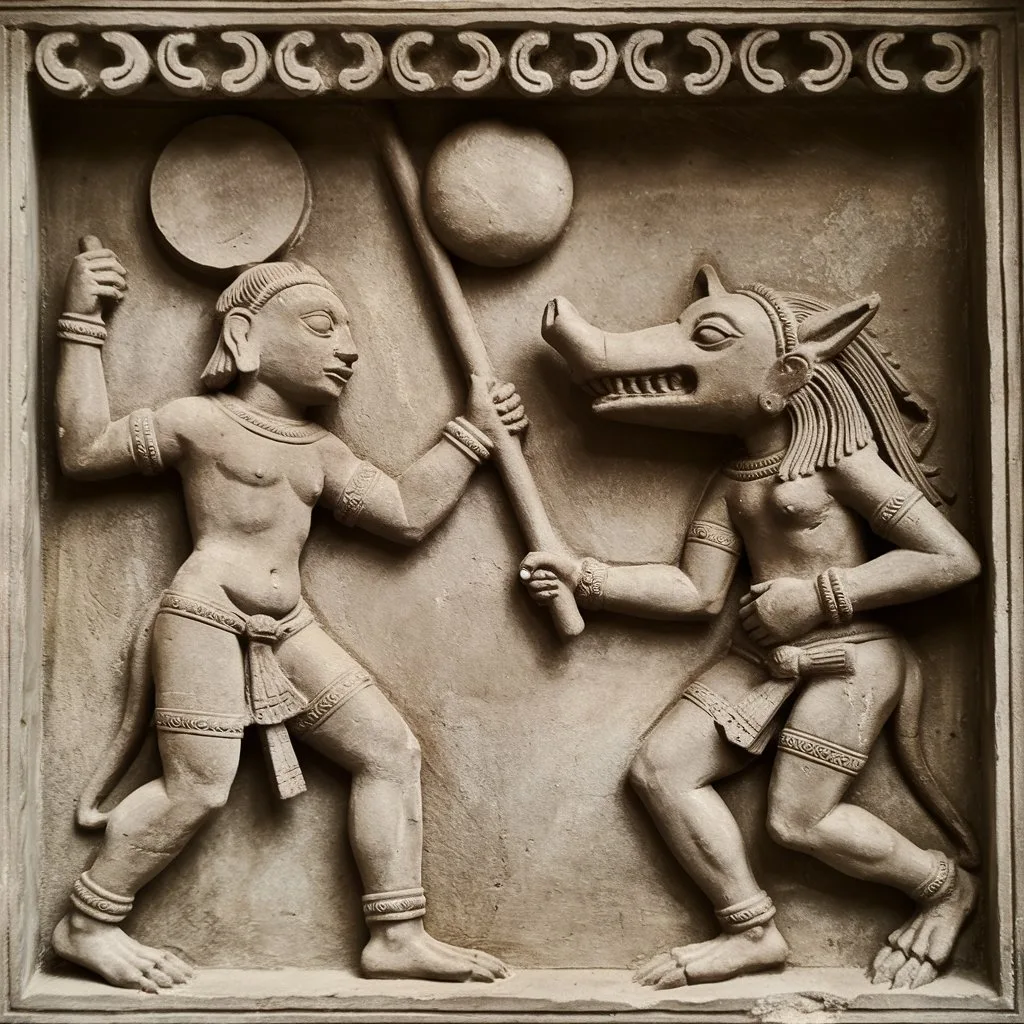
Today, the word berserk refers to someone violent or out of control. How cool is it that the word is derived from Viking culture?
Gender Roles Weren’t Rigid
Nordic countries were male-dominated, although women had a great deal of independence. They may embark on adventurous expeditions alongside men and create their far-flung colonists. Because gender was more fluid in Viking culture, women were able to take on various roles that were traditionally reserved for men in Western Europe.
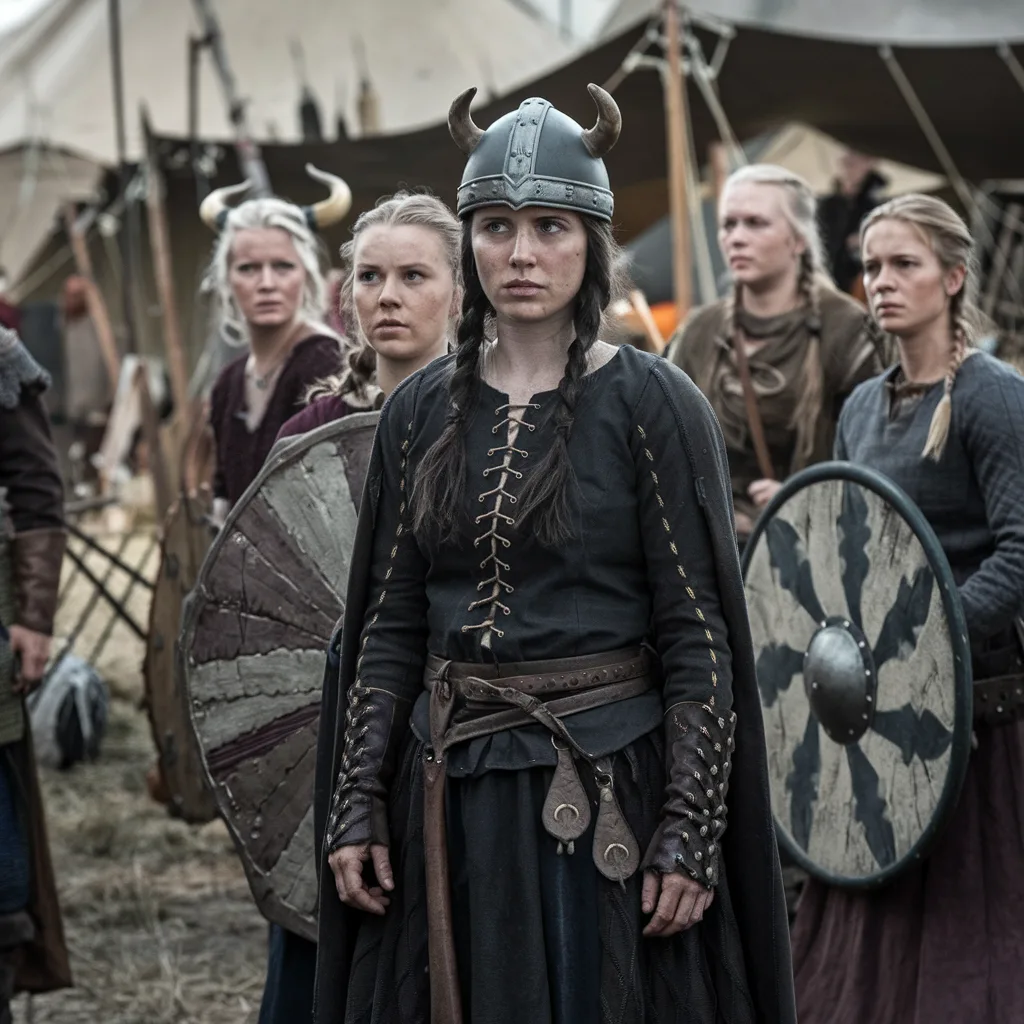
There were warrior women known as shieldmaidens, who dressed as men and learned swordplay and other warlike abilities. Some of them even fought! They also contribute to Nordic sagas, and archaeologists unearthed the burial of a high-ranking female Viking fighter.
Vikings Sold “Unicorn Horns”
Even though Vikings were infamous for raiding and pillaging towns, they were also avid traders, with trading networks extending to North America and the Middle East. One of the most infamous items they traded was “unicorn horns”.
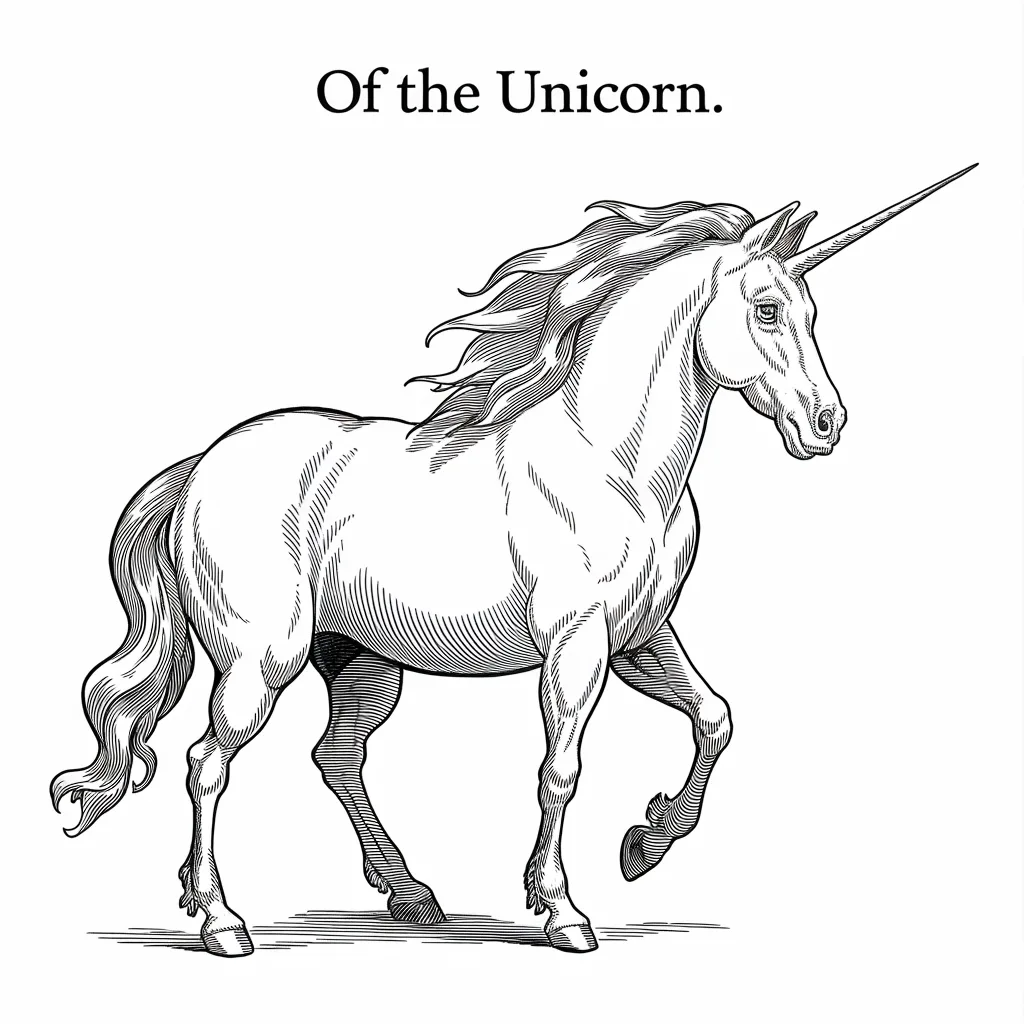
The horns were narwhal tusks that were sold as unicorn horns. Unicorns were extremely popular in medieval Europe, and many people believed they existed. People would pay a lot of money for unicorn horns.
Vikings Were Active in the Slave Trade
Slavery was an integral component of Viking civilization. Many Vikings became wealthy through human trafficking, and they would capture and enslave women and young men when visiting Anglo-Saxon, Celtic, and Slavic villages. Vikings would exchange slaves for goods or other slaves, depending on their needs.
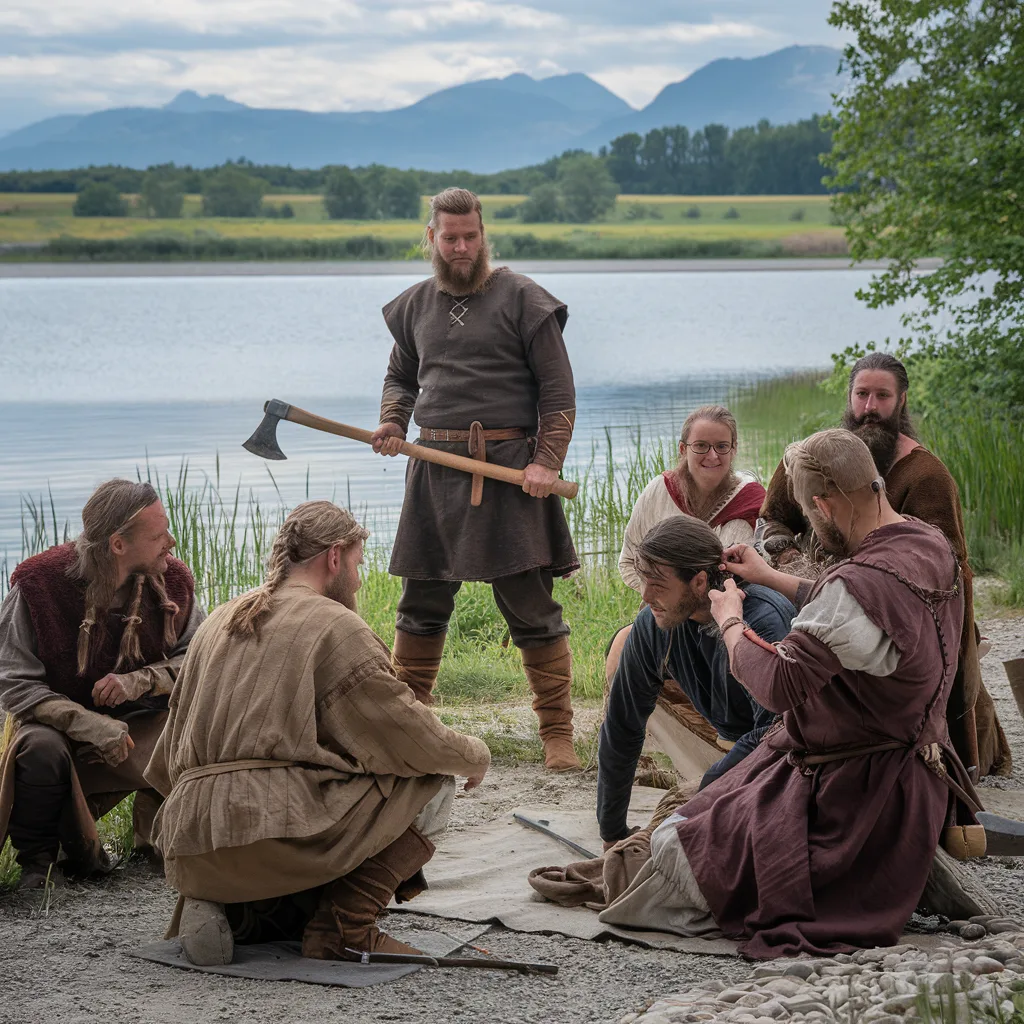
Slaves were referred to as “thralls” and were sold in vast slave marketplaces throughout Europe and the Middle East. They were utilized to manage farms, help with household chores, and meet other community needs. However, they were frequently treated as livestock, and they lived without rights while serving their owners.
Vikings Kept Bears as Pets
Dogs were not the only pets Vikings kept. Pets were an important element of Viking society, and they kept cats, birds, and bears. Brown bear cubs were domesticated from cubhood and became known as “house bears”. However, they became a big burden, and importing them from Iceland was prohibited by legislation.
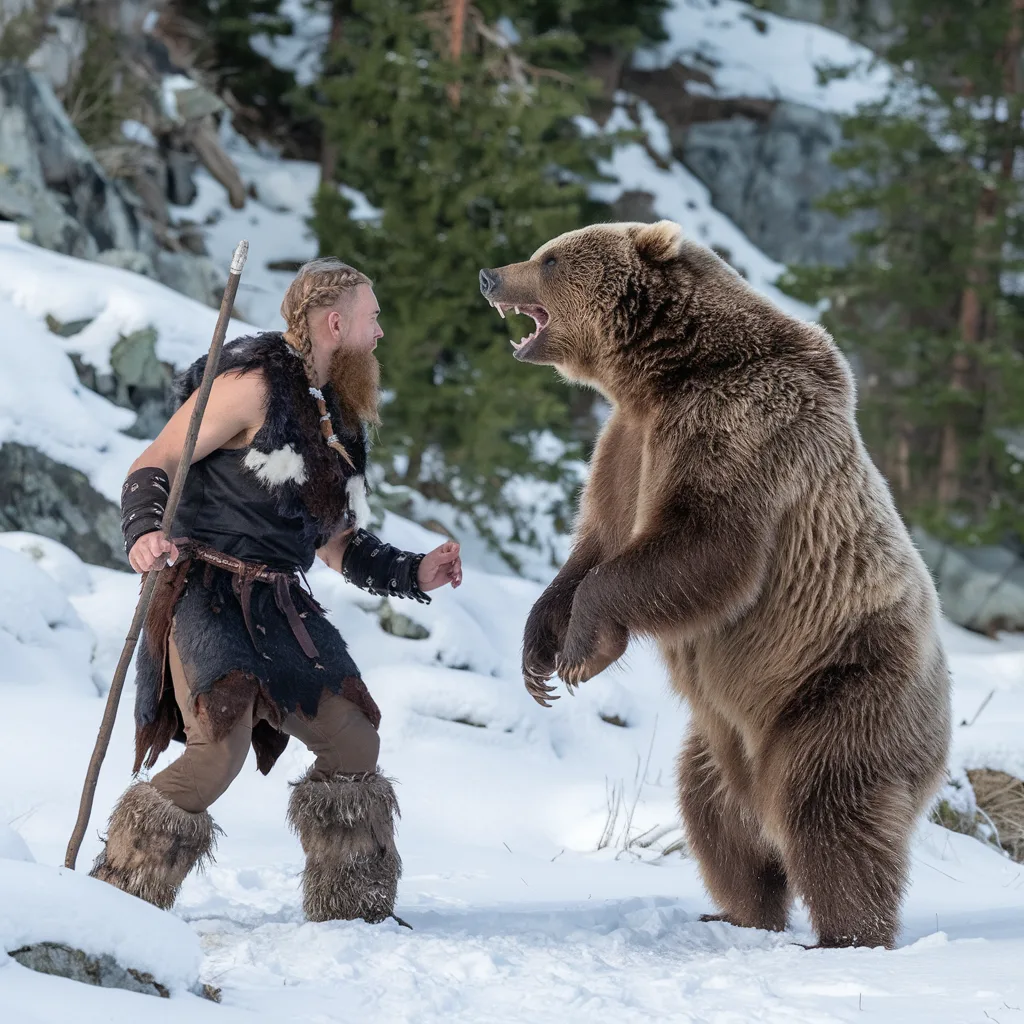
People who let their house bear escape and cause property damage received large fines.
Vikings Invented Combs
Even though their adversaries thought they were scruffy, Vikings were exceedingly clean and washed at least once a week. They groomed their long hair with barbed combs carved from the antlers of red deer or other animals they had hunted. These combs have even been discovered in Viking tombs.
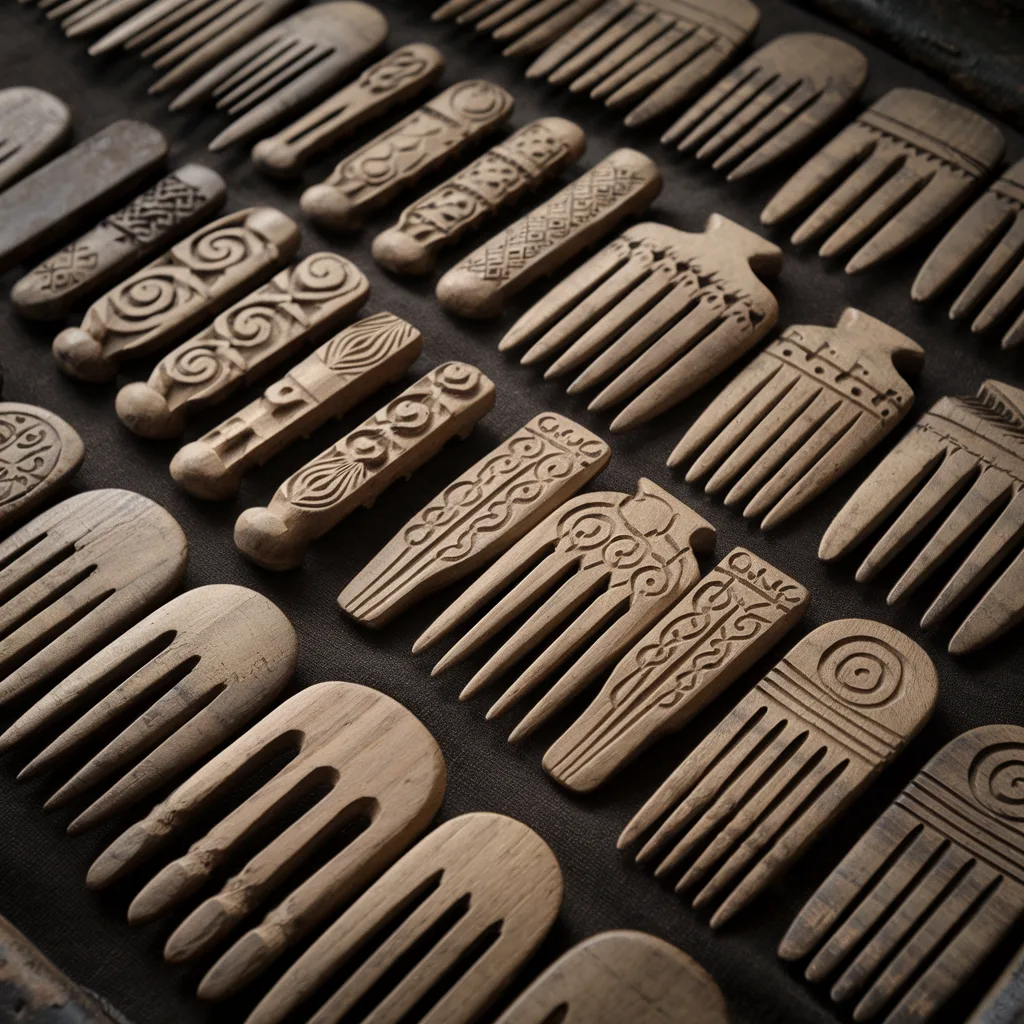
While combs existed in different cultures around the world, Vikings are credited with inventing the comb as we know it today.
Vikings Didn’t Call Themselves Vikings
We noted that Vikings did not call themselves Vikings, and the term was used to describe those who sailed from Scandinavia on their famed ships to destinations around the world, so where does the word come from?
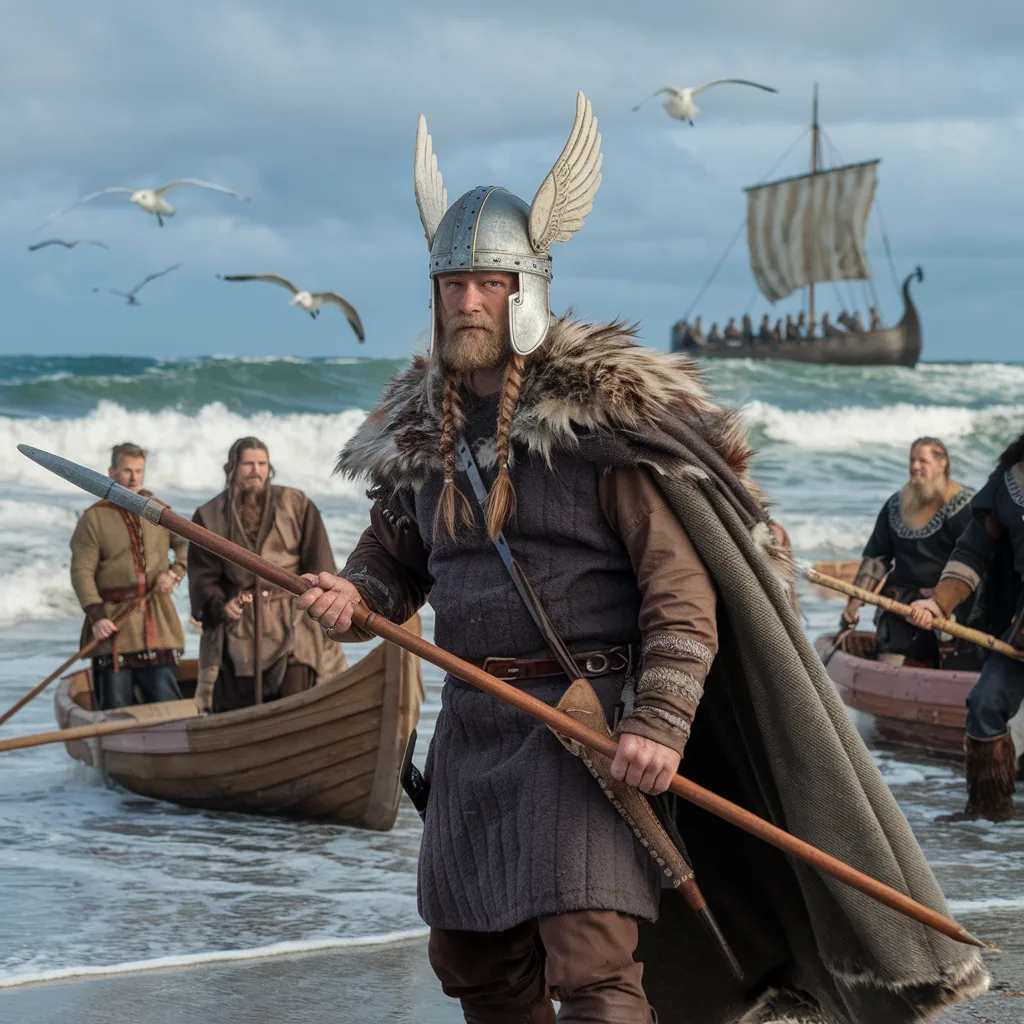
Well, it comes from the Old Norse word “vikingr,” which might be interpreted as a pirate. The Vikings were marauders, and their first big raid on Western Europe was particularly savage, taking place just off the coast of what is now England.
Vikings Had Unique Ways to Start Fires
Even though the Vikings were hygienic, they did not waste anything, even human pee. For fires, they collected a fungus known as touchwood from tree bark and cooked it in urine for several days before pressing the soaked bark into a felt-like fabric that was easily transportable.
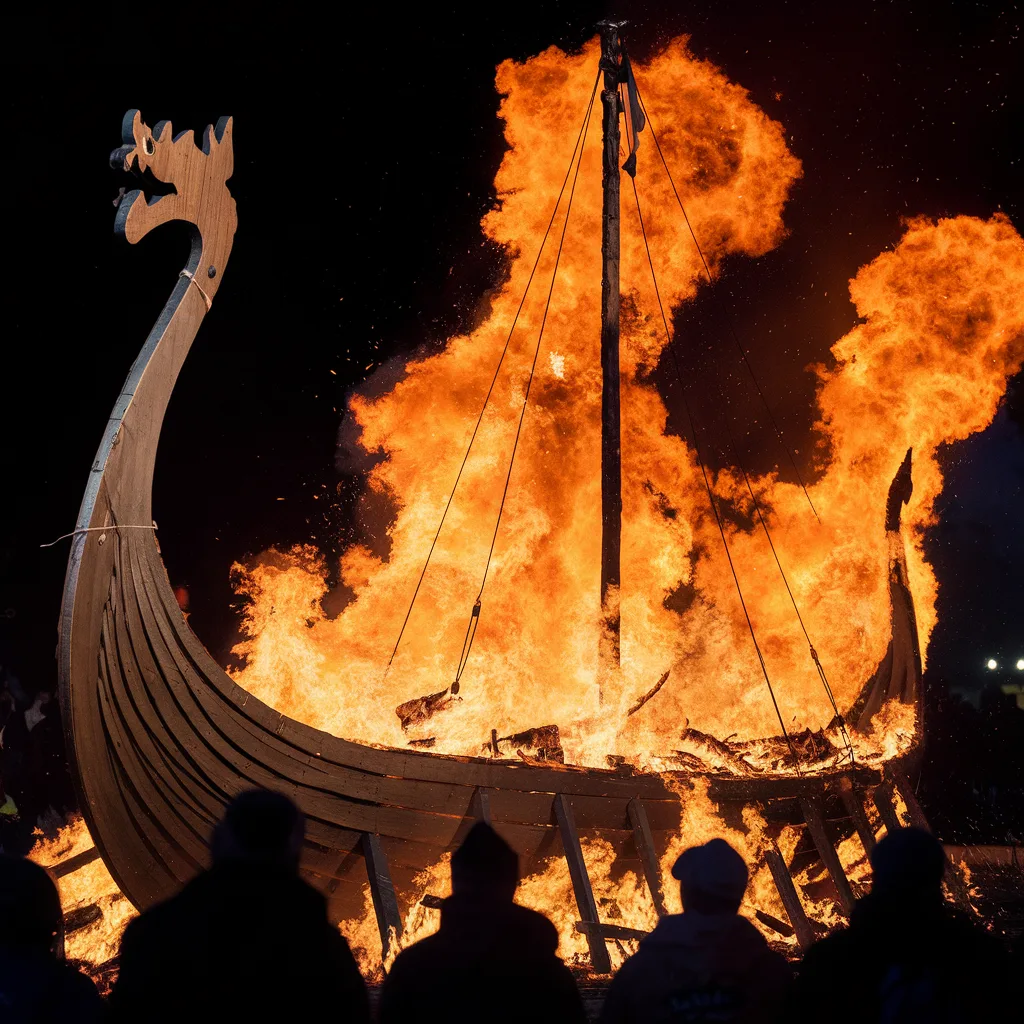
They realized that the sodium nitrate found in urine caused the material to smolder rather than burn, allowing them to carry fire with them wherever they went.
Satisfaction in the Bedroom was Important
While the Vikings were not known for radical gender equality, women enjoyed more rights than we realize. Although marriage and procreation were expected, premarital relationships were frequent and not discouraged.
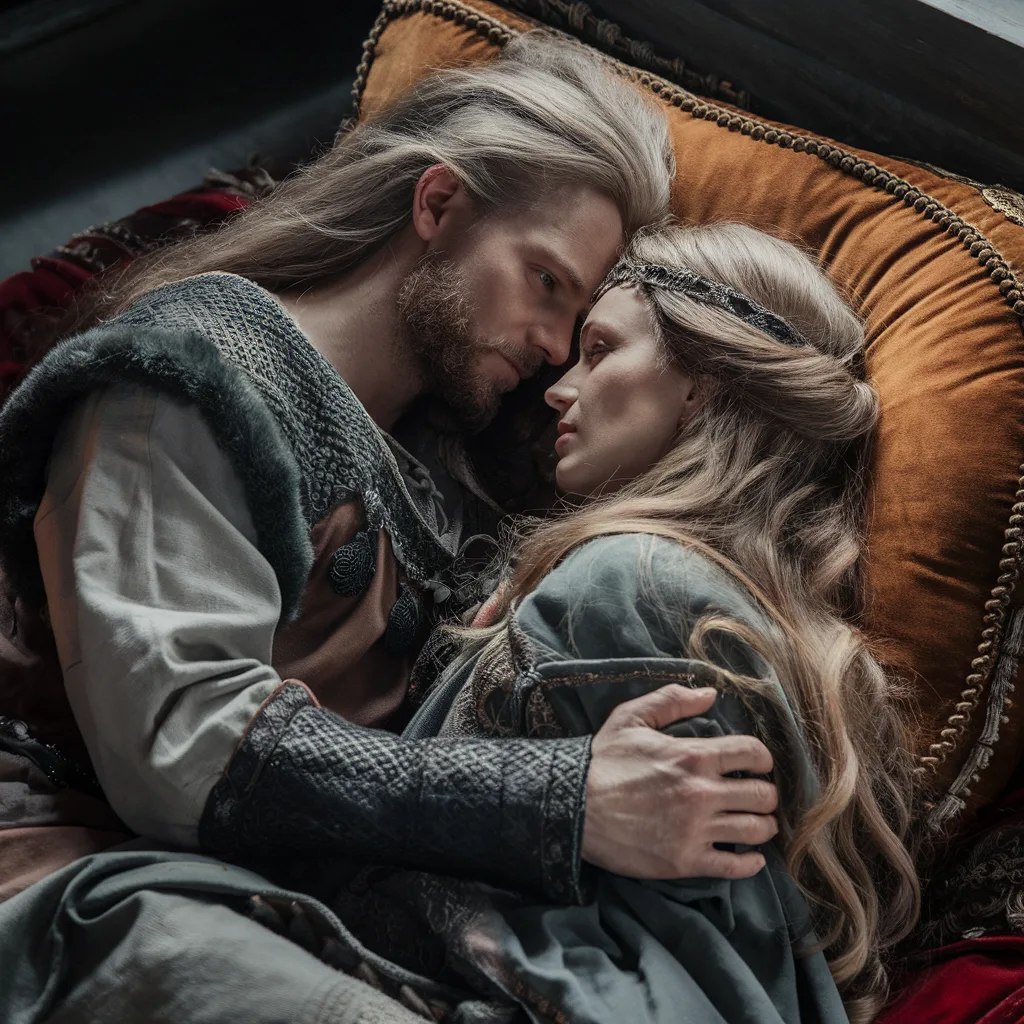
Women might also divorce their husbands for a variety of reasons, such as physical abuse or incompatibility. If a lady was dissatisfied in the bedroom, she might find another partner! That sounds quite progressive to us.
Vikings Didn’t Wear Horned Helmets
Almost every Viking costume and movie depiction shows them wearing horned helmets into battle, but did you realize they didn’t wear them? While Norsemen most likely wore headgear, images from the Viking age do not show it, and the only actual Viking helmet ever unearthed was hornless.
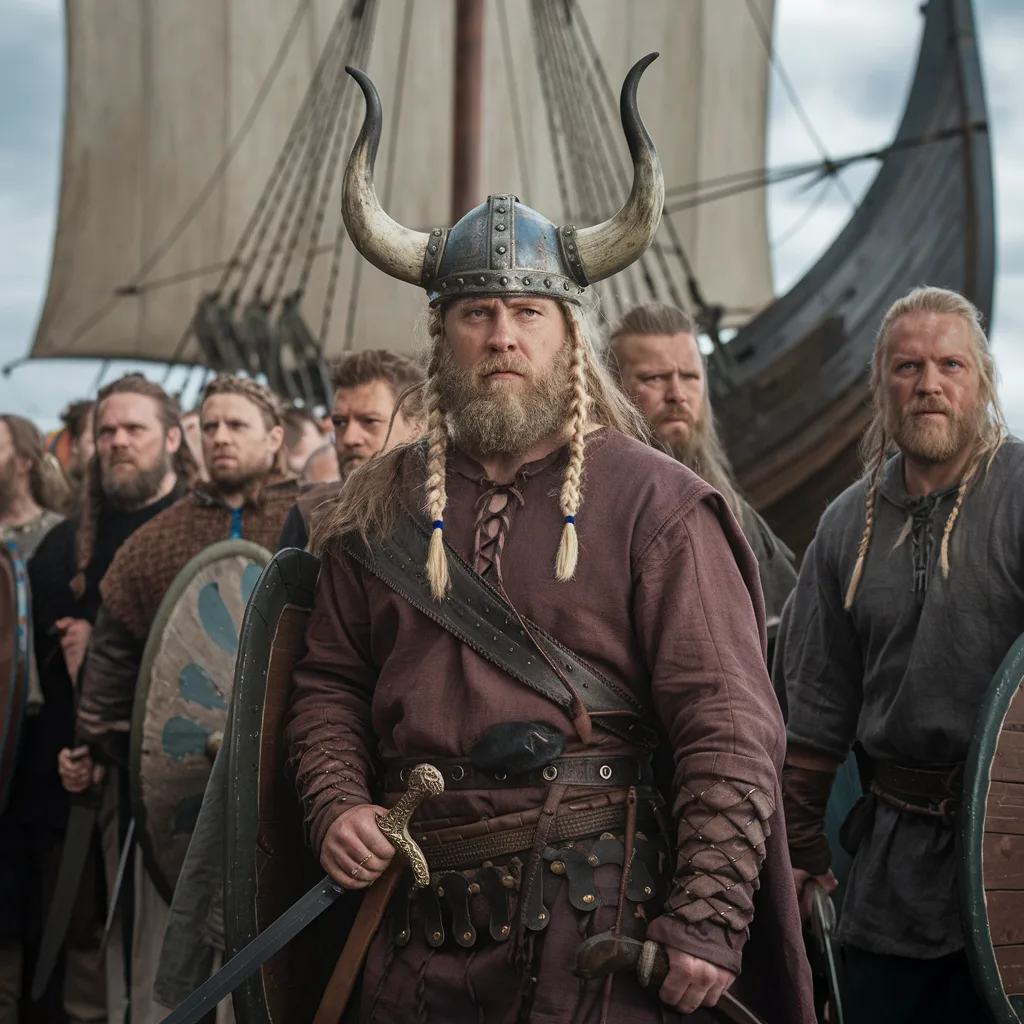
The notion of Vikings wearing horned helmets came from painters in the nineteenth century who wanted to make them look more savage and pagan by putting horns on their heads like Satan’s.
Vikings Inspired Bluetooth
Have you ever wondered how Bluetooth earned its name? It’s all about the Viking roots of the Swedish telecommunications corporation Ericsson. Harald Bluetooth was a famous Viking king of Denmark and Norway who, throughout his reign, brought together neighboring Viking tribes to develop a means for them to coexist.
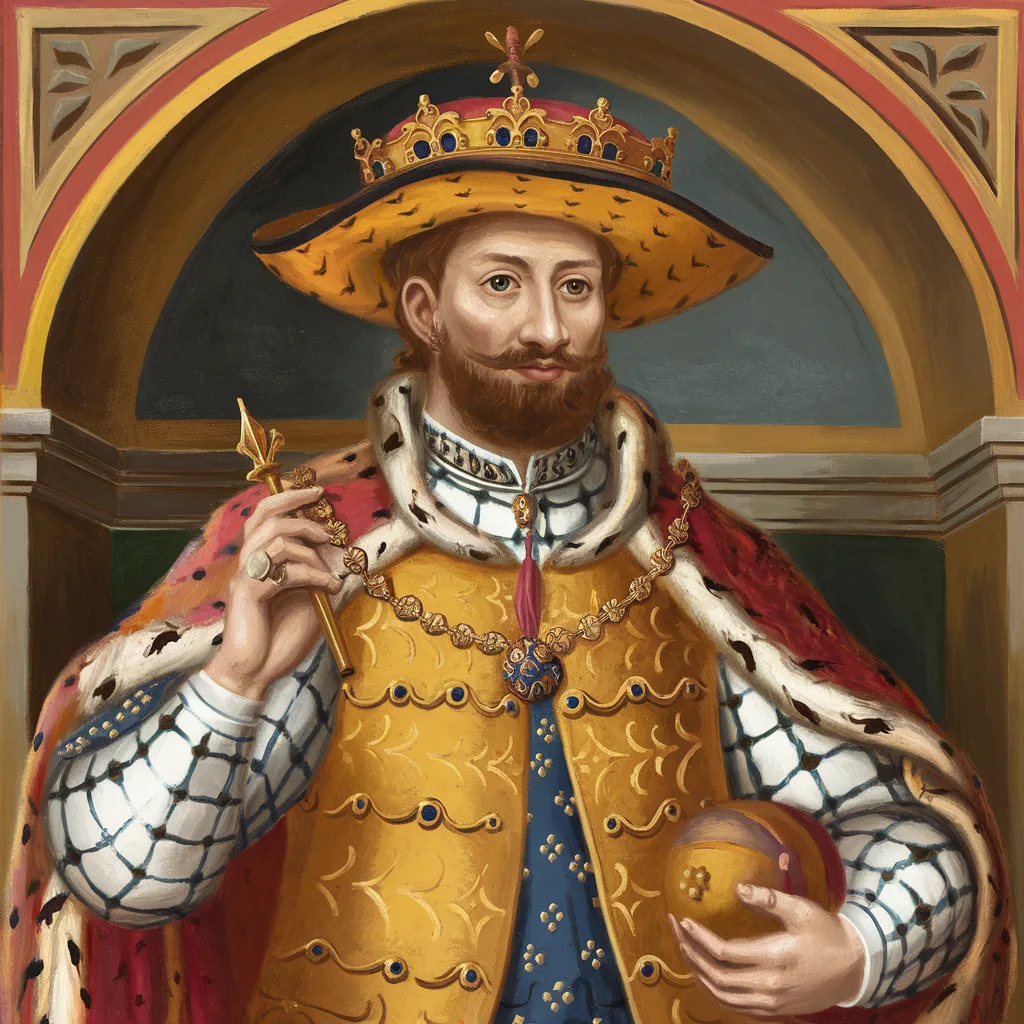
So, Jim Kardach, the founder of Bluetooth, named his device after King Bluetooth because it connects people. Not only that, but the Bluetooth emblem combines the Nordic Runes for “B” and “H”, Harald Bluetooth’s initials.
Onion Soup and the Severity of Wounds
Vikings frequently returned from battle injured, and if they had stomach wounds, they were given a powerful onion soup with various spices. After a few minutes, someone would arrive and smell their wounds.
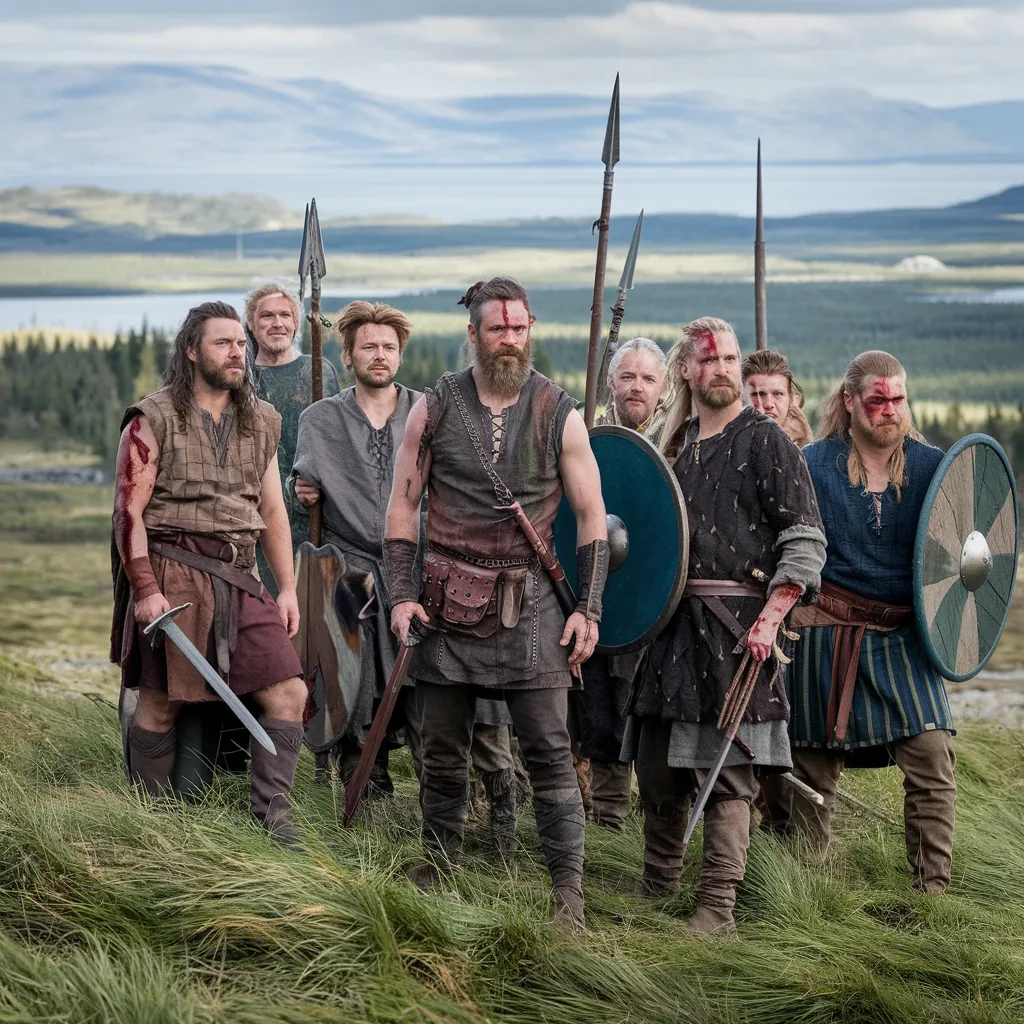
If they could smell the onions strongly through the wound, they had serious abdominal problems and their stomach had been cut. It meant there was no chance of surviving the wounds, and death was inevitable.
The modern British Monarch Can Be Traced Back to Vikings
Vikings invaded and conquered England, and the last successful invasion resulted in the establishment of a new kingdom with Viking roots. William the Conqueror defeated English King Harold Godwinson at the Battle of Hastings, ushering in a period of Norman hegemony over England. The Normans were Viking descendants who settled in northern France.
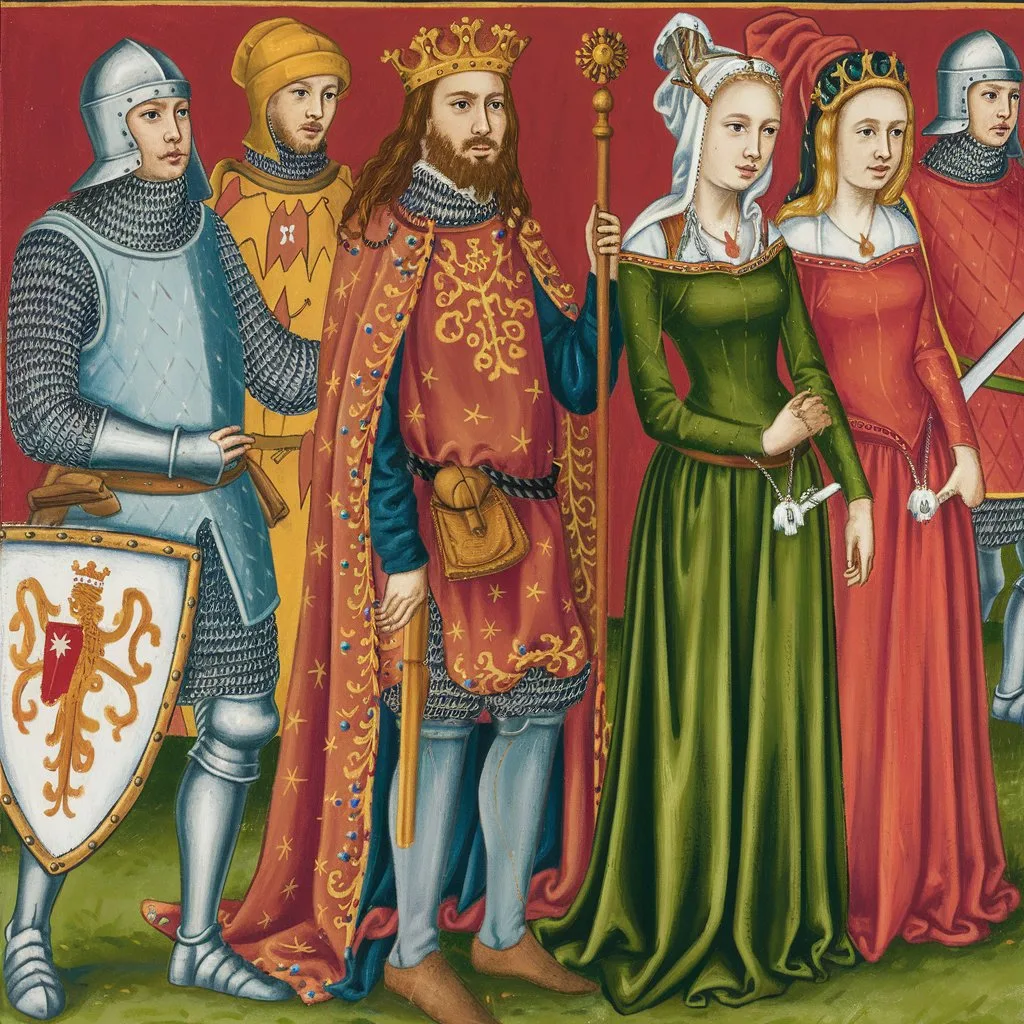
So, every English king and queen, including Queen Elizabeth I, claim genealogy from William and his Viking ancestors!
Vikings Weren’t All Scandinavian
Not only weren’t all Vikings blond, but neither were they all Scandinavian! More than 400 Viking skulls from archeological sites distributed over Europe and Greenland were DNA sequenced by the University of Cambridge in the United Kingdom and the University of Copenhagen in Denmark, revealing that Viking identity was impacted by alien genes from Asia and Southern Europe.
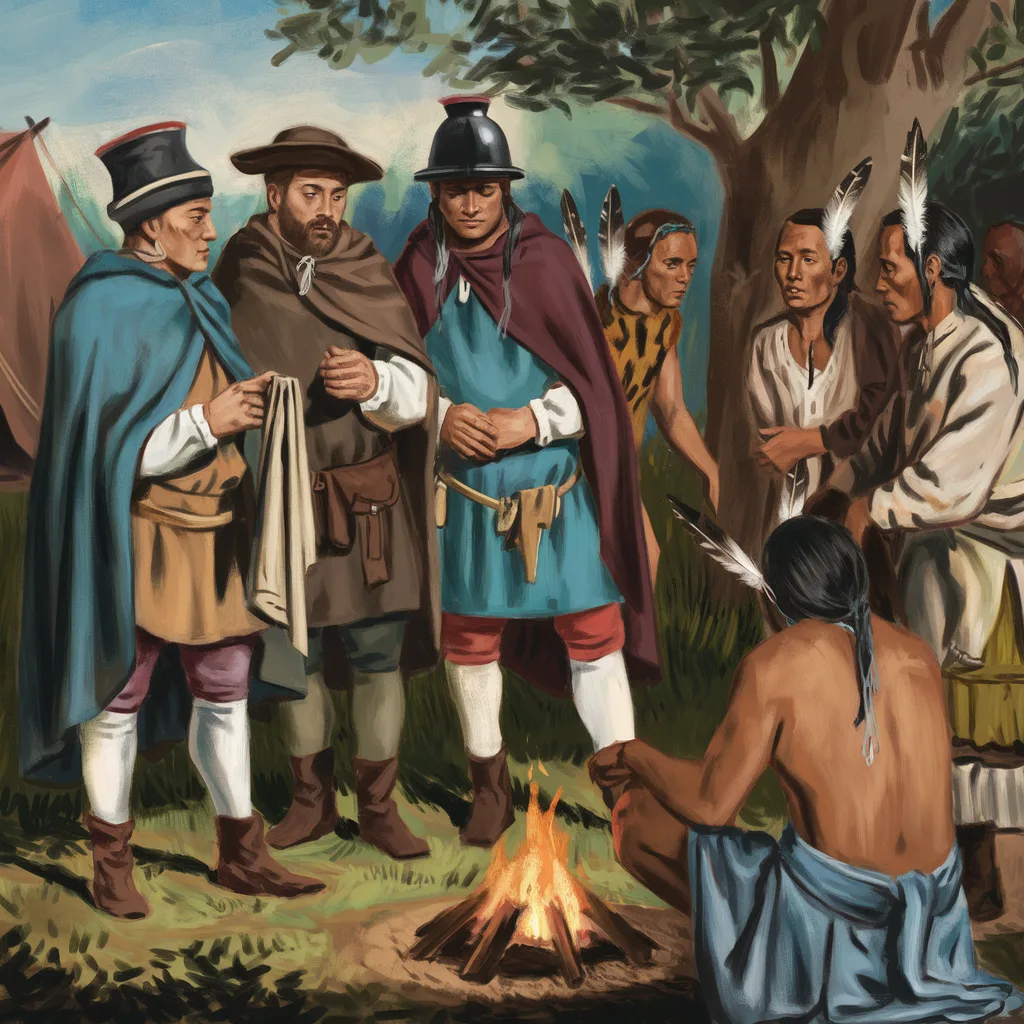
It’s also possible that Viking sailors made touch with Native Americans during their voyage, and scientists have uncovered a genetic link between Icelanders and Native Americans, implying that a Native American lady may have sailed to Iceland with Vikings.
Vikings Abandoned Sick Children
Viking culture emphasized strength and health, and they were known to abandon weak offspring. If a child was born unwell or feeble and unable to contribute to society, they were deemed useless. So, to save resources and time, these children were left in the wilderness or dumped into the sea!
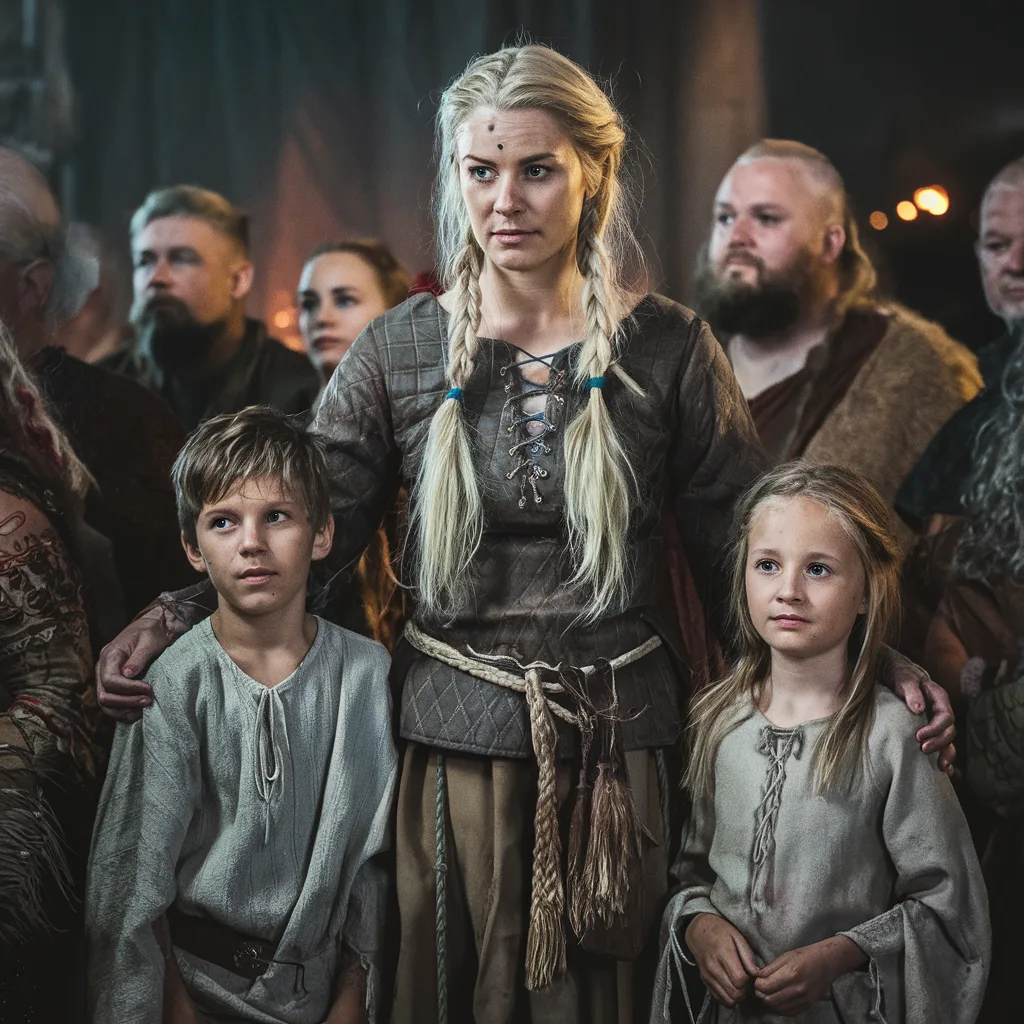
Abandoning weak children was considered a mercy because Viking life was difficult, and children were expected to work, learn to fight, and contribute to society by the age of five years.
Women Got Married Between the Ages of 12-15
While women in the Viking Age had a great deal of freedom, including the ability to own land, get a divorce, and reclaim their dowries after their marriages ended, they married young.
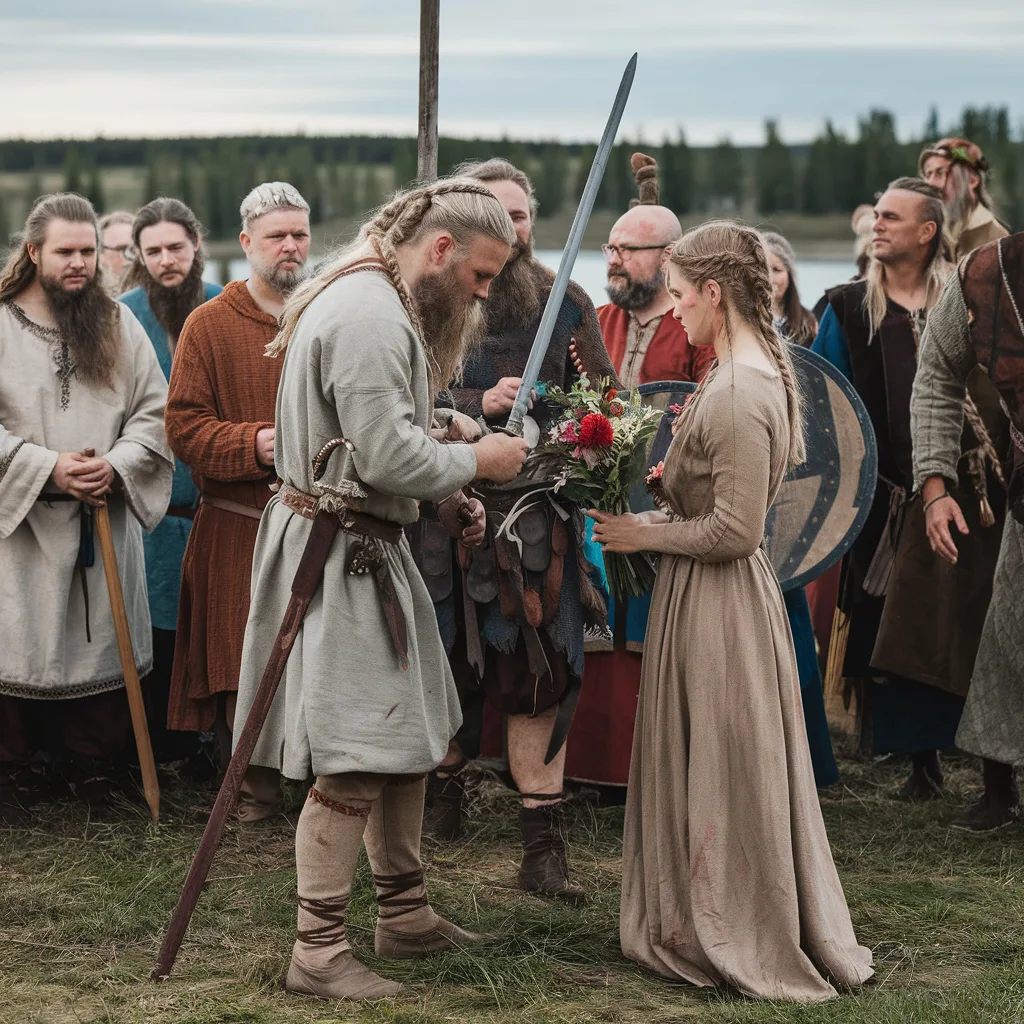
They married between the ages of twelve and fifteen! Families discussed and planned weddings, although the lady typically had a say as well. And if she desired a divorce, she had to summon witnesses to her home and marital bed and inform them that she had divorced her husband.
Local People Were Buried With Vikings
Among the archaeological remains discovered by the University of Cambridge in the United Kingdom and the University of Copenhagen in Denmark from 400 Viking skeletons distributed across Europe and Greenland, not all of the skeletons discovered in Scotland were Vikings!
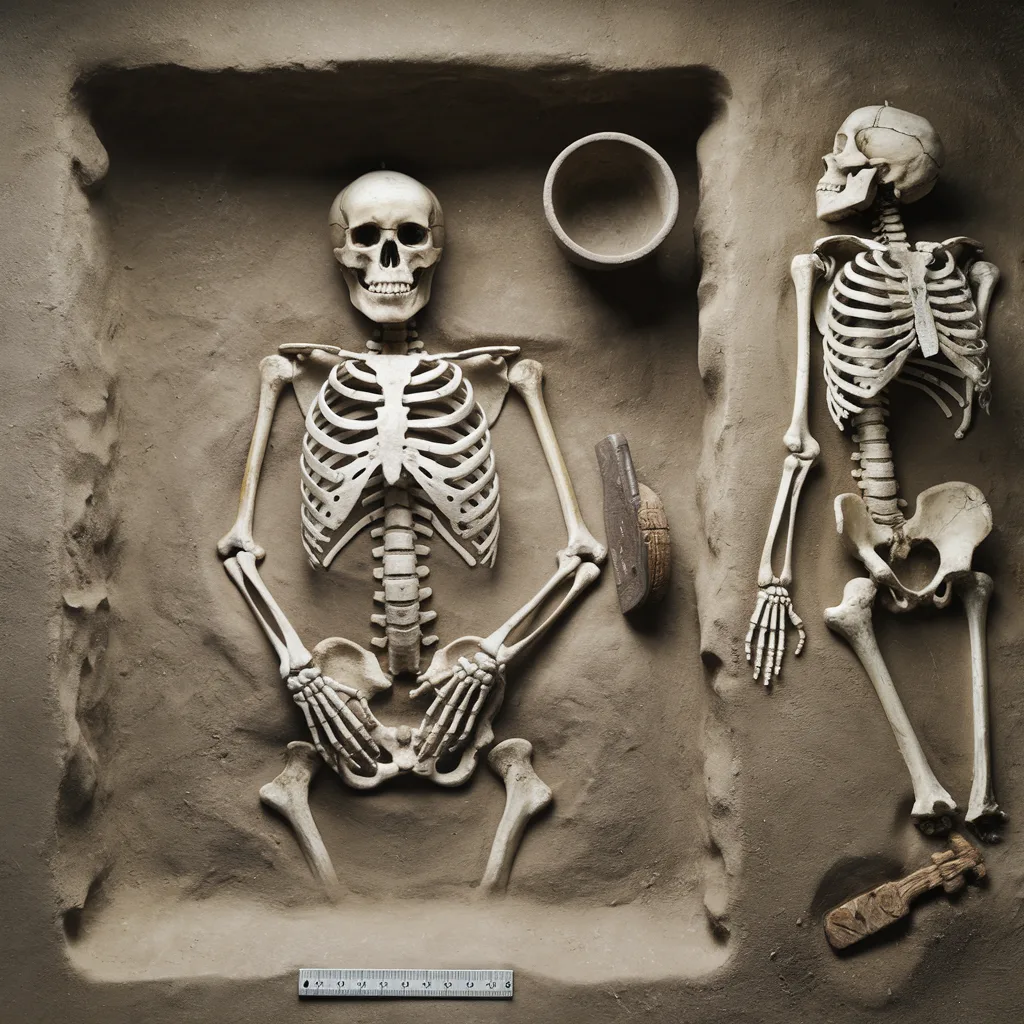
Skeletons from well-known Viking burial sites in Scotland were likely locals who assumed Viking identities and were buried beside swords and other Viking relics.
Could Warriors’ Dogs Join Them In the Afterlife?
Pets were an important element of Viking culture, and dogs were revered through mythology and spiritual connections. Dogs served as working animals and companions, as well as status symbols. They were cherished not only in this life but also in the afterlife, with the Vikings believing that warriors’ dogs may accompany them to Valhalla.
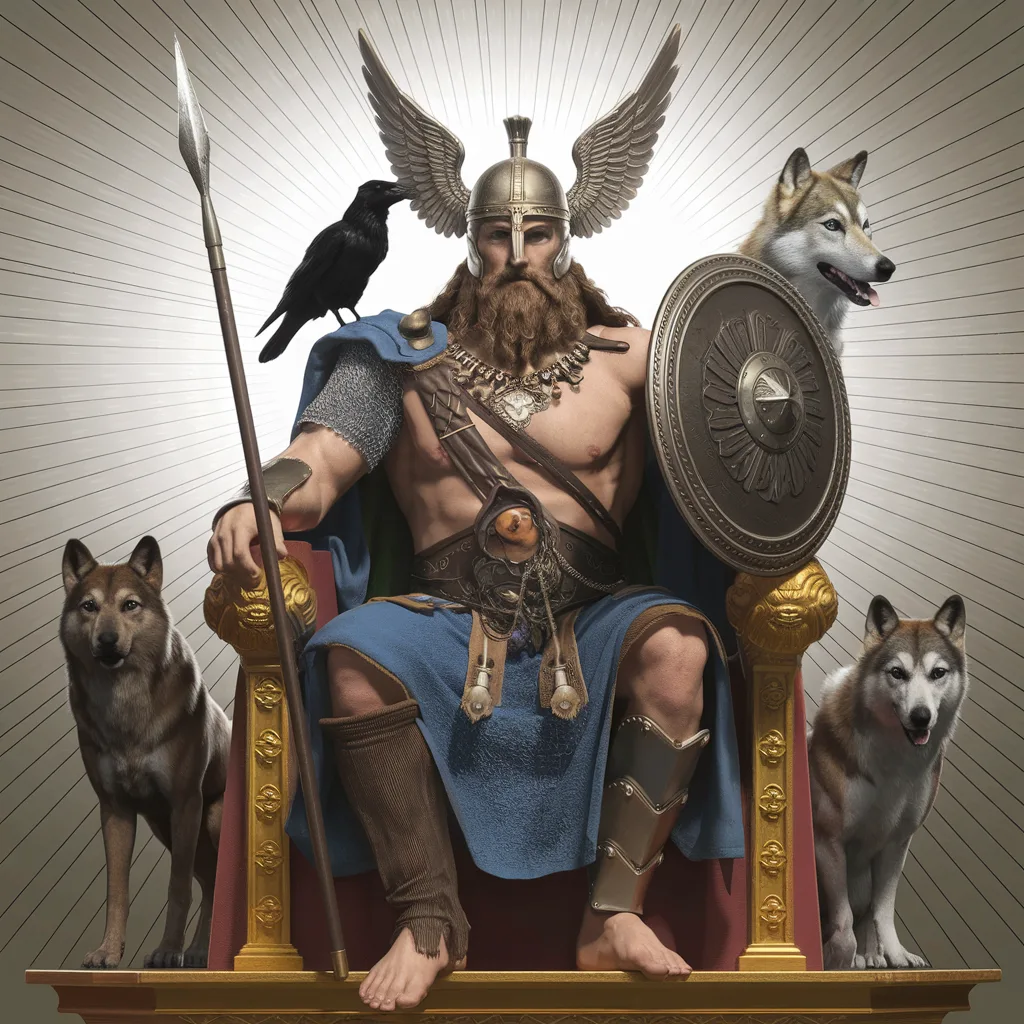
But to enter Valhalla, the dogs had to die, and they were occasionally slaughtered and buried beside their masters.
Comic Books are Influenced by Viking Culture
Marvel fans are certainly aware that Viking culture has had a significant influence on much of the Marvel Cinematic Universe. Viking gods and goddesses include beloved characters such as Thor, Odin, Loki, and Freyja.
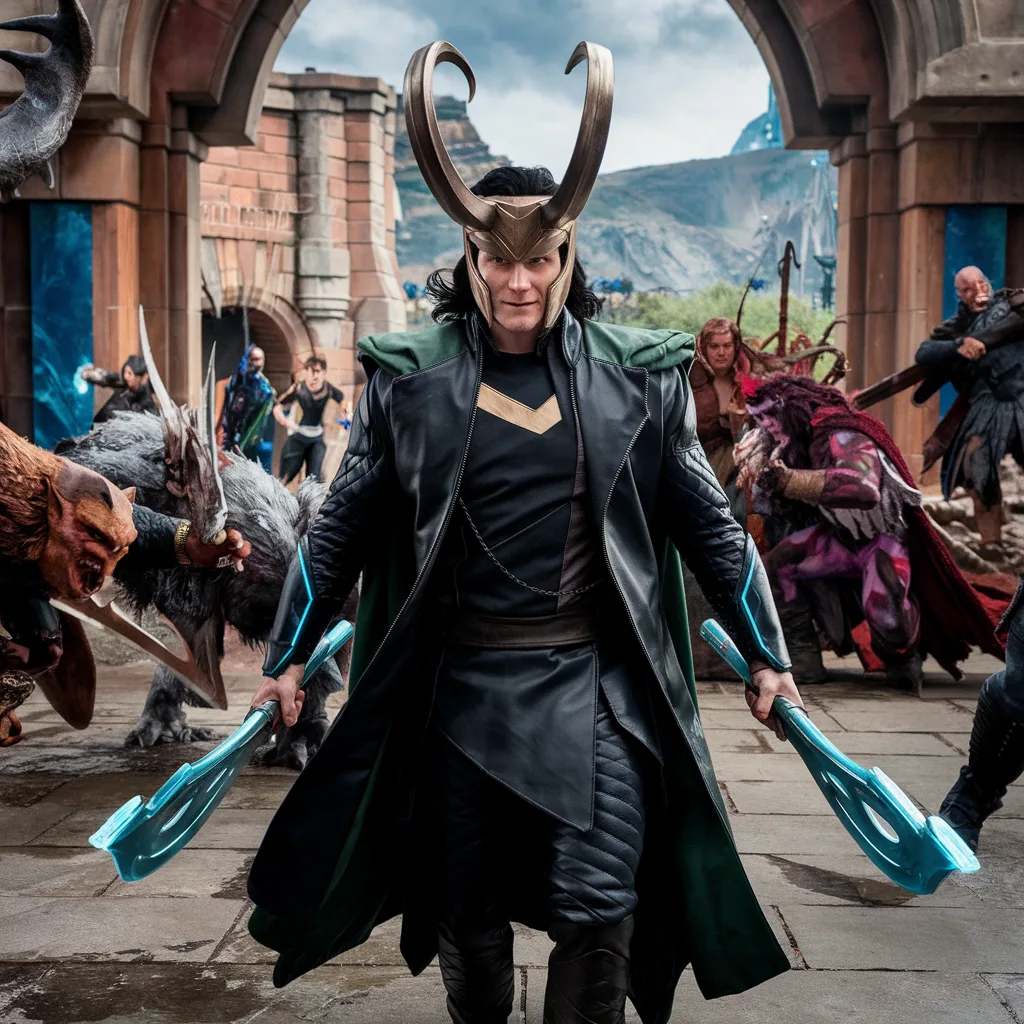
Thor is the god of thunder, Odin is the god of war and wisdom, Loki is the mischief-maker who can transform into many animals, and Freyja is the goddess of love, beauty, fertility, sex, war, and gold. How cool is that?
Burials Reflected Gender Roles
Viking ladies enjoyed far greater independence than other women of their time. Nonetheless, women performed traditional responsibilities like as cooking and raising children, while males hunted, fished, fought, traded, and cultivated. Even Viking burials maintained the customary gender norms.
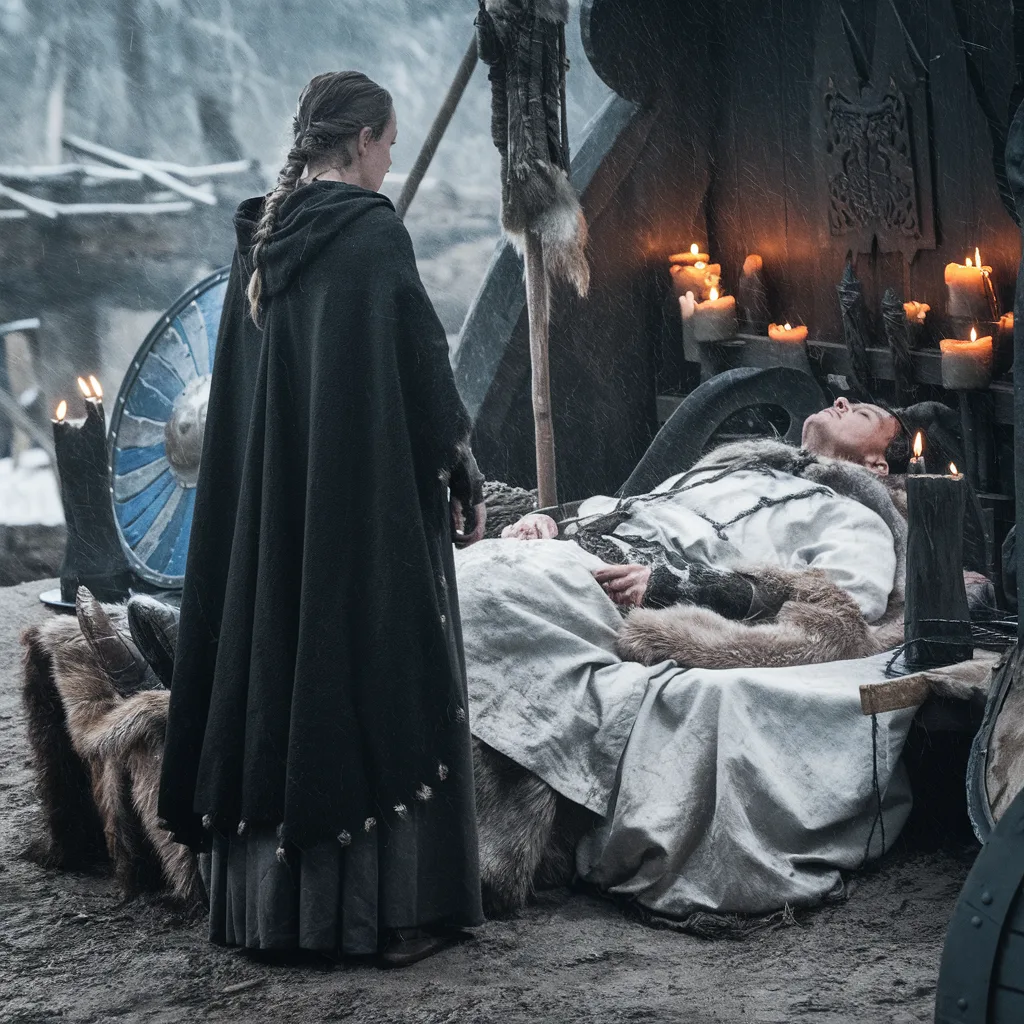
When Viking men died, they were typically buried with their weapons and tools, while women were buried with jewelry, household objects, and needlework.
Vikings Weren’t Huge
Vikings are frequently depicted as massive, powerful men capable of defeating their opponents with a single ax swing, but this was not the case. Vikings were not very tall; in fact, they were shorter than the majority of people today.
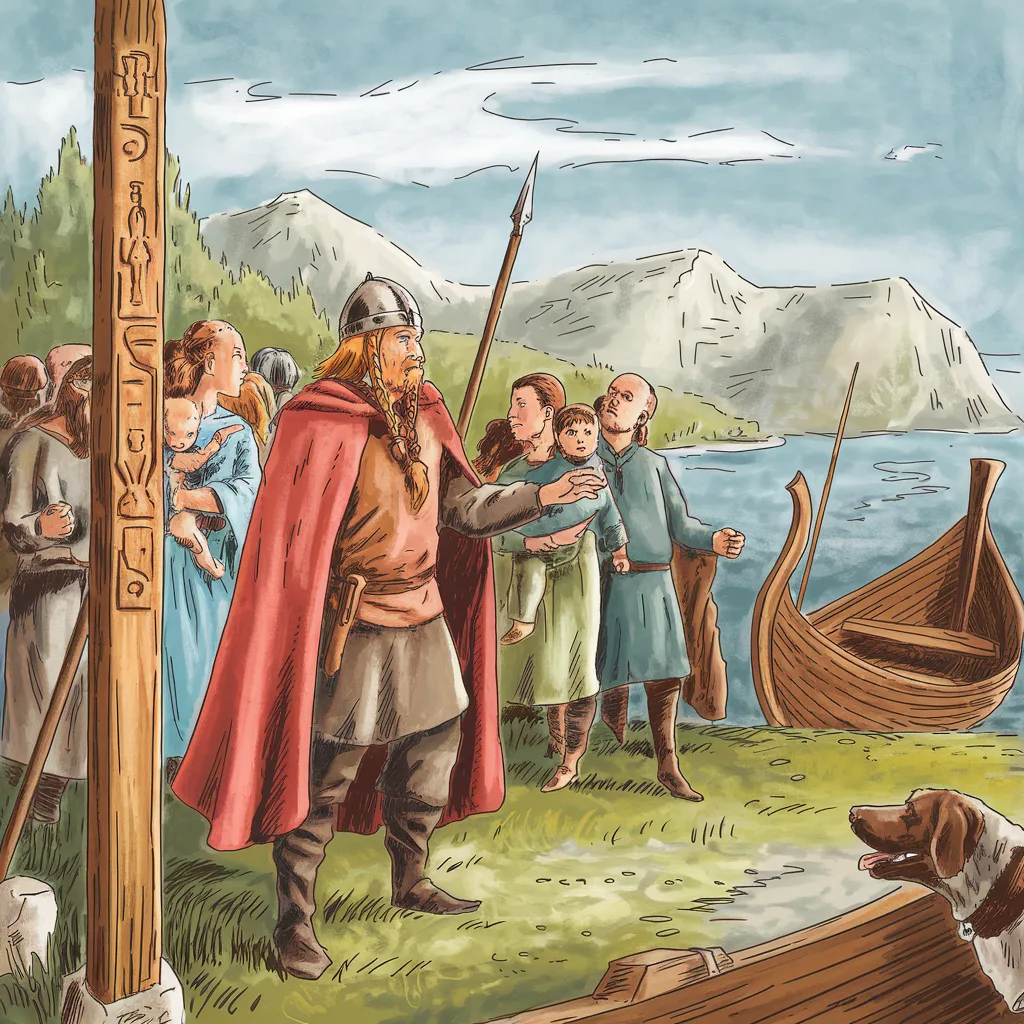
According to skeletal remains, the men were roughly 5’6″ tall and the women were around 5’1″. They resembled neither Chris Hemsworth’s Thor nor Rollo from the History Channel’s Vikings. Their height was exaggerated to make them appear unnatural, similar to the horned helmets that added to their scariness.
Vikings Buried Their Dead in Boats
Vikings loved boats and spent most of their lives on the water, thus it seems to reason that their graves included boats. In Norse mythology, valiant warriors required a vessel to cross over into the afterlife and reach Valhalla.
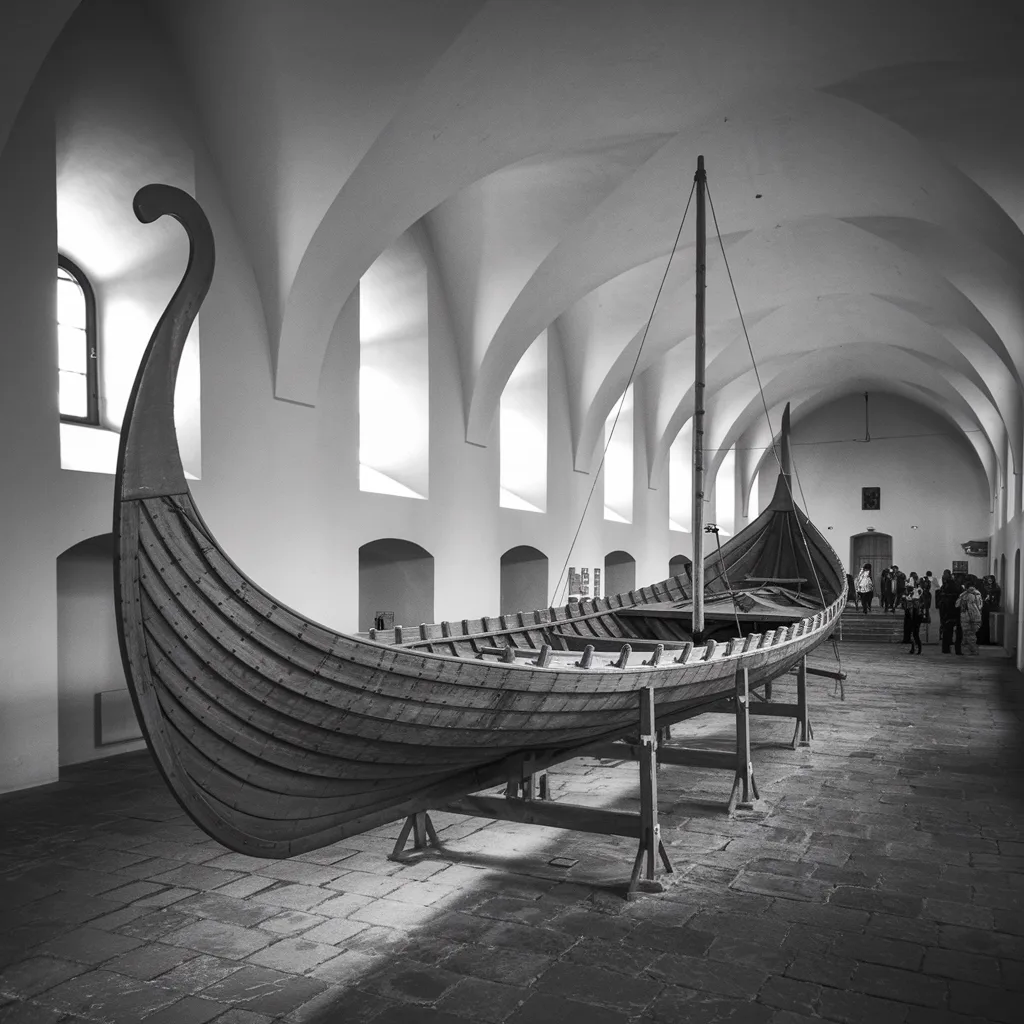
Thus, great raiders and important women were frequently honored by being laid to rest in boats. They were surrounded with weapons, animals, expensive items, and whatever else they could require in the afterlife. Sacrificed slaves were occasionally placed on the boat to further serve their lords.
Vikings Reached North America Before Columbus
Despite popular belief, Christopher Columbus was not the first European to explore North America. The Vikings were the first Europeans to arrive in North America over 500 years before Columbus sailed the ocean blue.
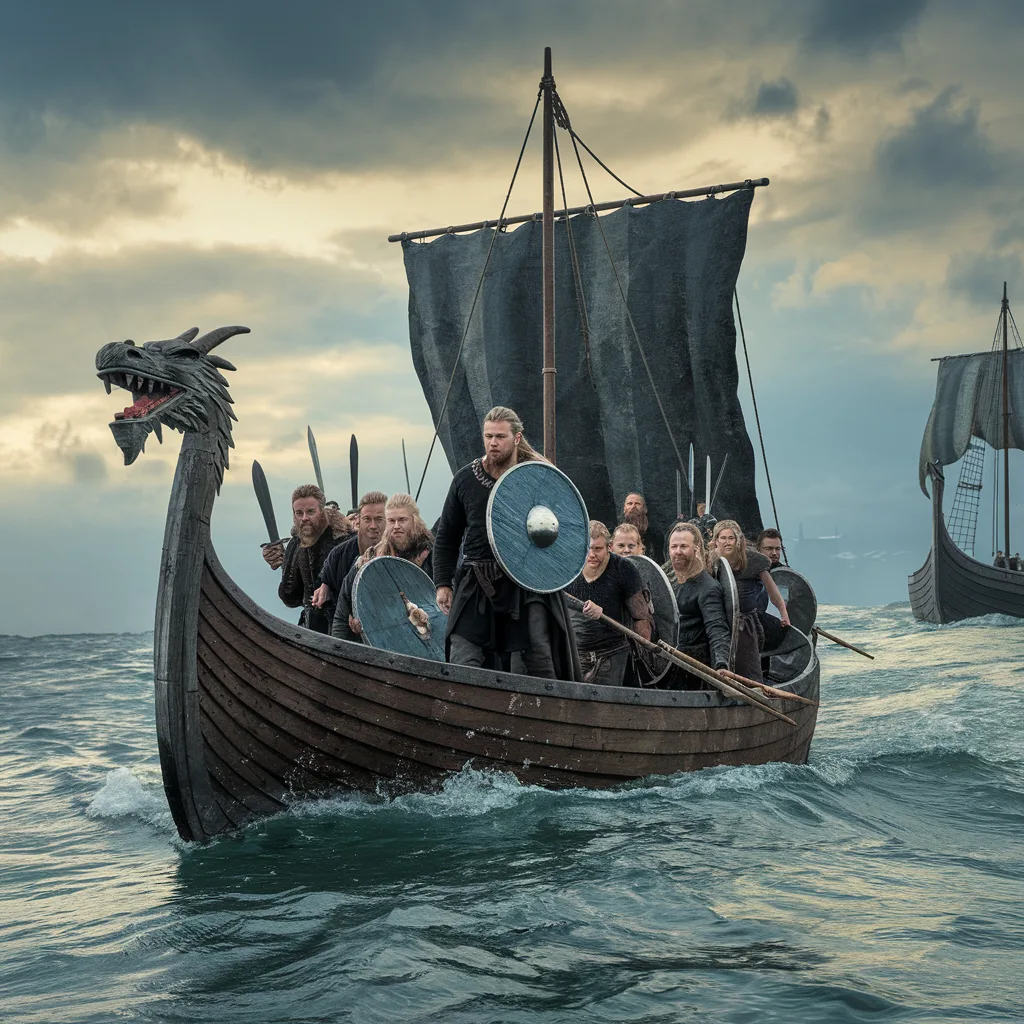
They arrived in what is now Canada in AD 1000. However, the Viking discovery of North America remained undiscovered long after Columbus was recognized as the first European to discover it.
Vikings Gave Us Popular Words
We said that the days of the week are named after Viking Gods, but that isn’t the only aspect of Viking culture that has influenced us today. Many commonly used words today, such as snort, lump, scrawny, rage, and even berserk, have Old Norse roots.
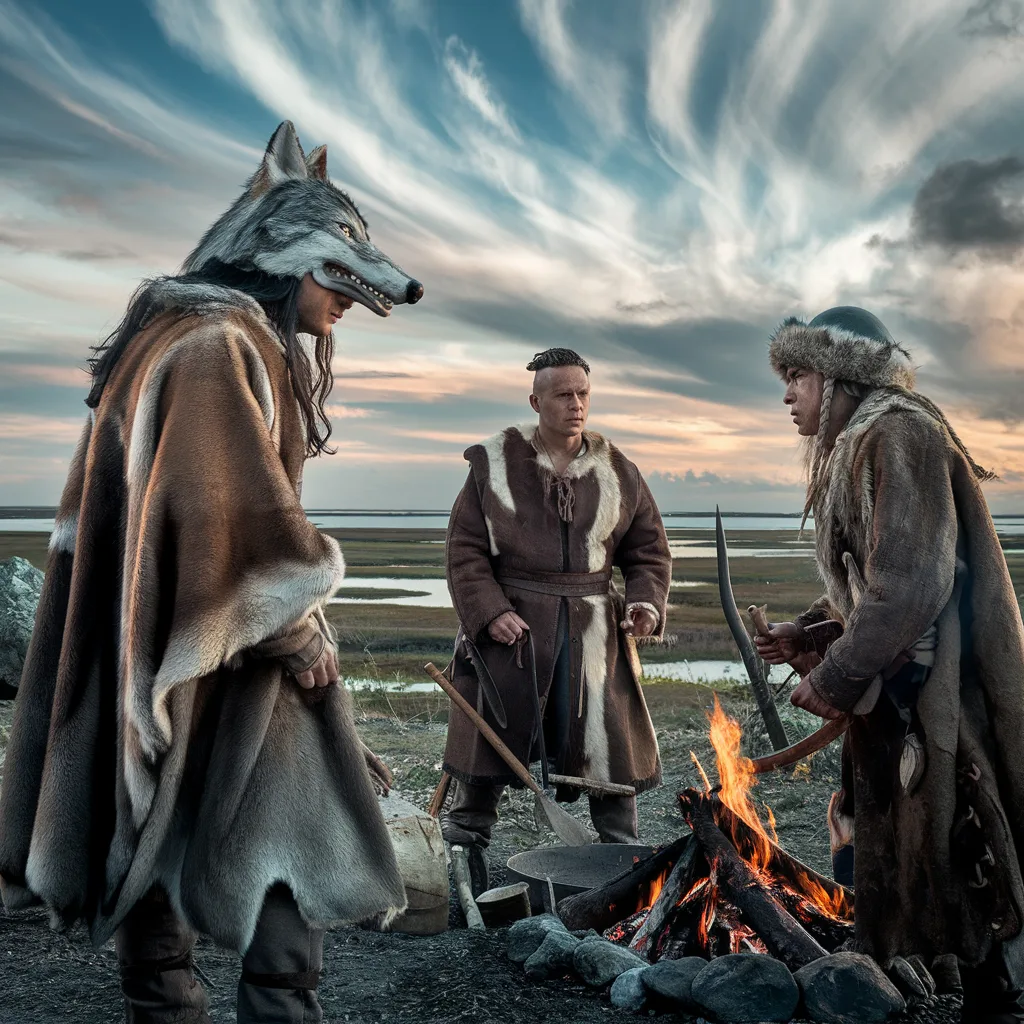
Berserkers were a kind of fearsome Viking warriors who wore bear or wolf skins and howled in battle like wild beasts. They went crazy!
Vikings Took Pride in Their Clothes
While Vikings were portrayed as rude and savage, they were rather cultured, wearing magnificent clothing embellished with jewelry. The Vikings were well-dressed and took pride in their appearance. They began making their garments at a young age and wore high-quality wool, linen, and animal hides. The wealthy owned silk.

Furthermore, the concept of fate played a significant role in how Vikings dressed because they never knew when they would die and therefore wanted to appear their best for their entrance into the hereafter.
Viking History was Oral Not Written
One of the reasons there are so many myths and erroneous representations of the Vikings is that they did not write anything down. Their history was oral, with stories told, retold, and passed down from generation to generation.
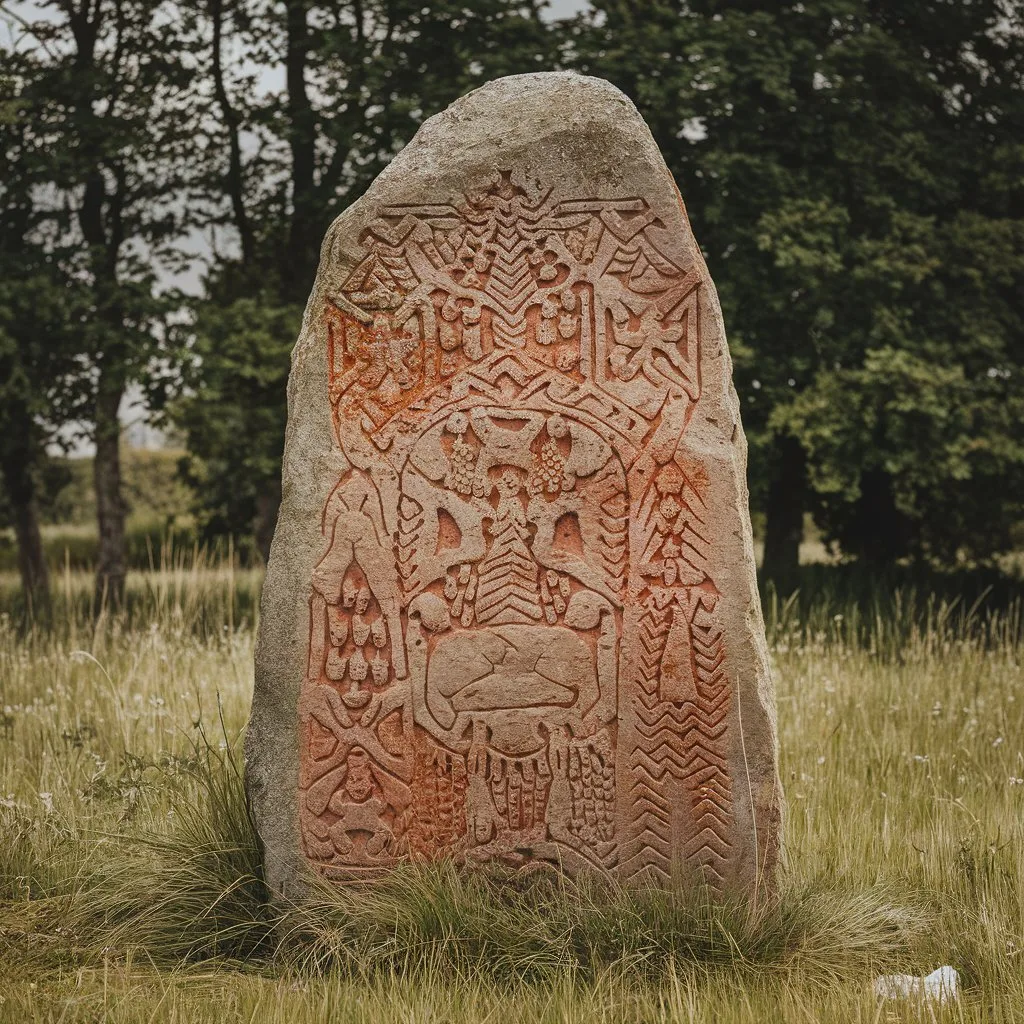
By the time they were written down and converted into sagas, it was difficult to distinguish between reality and fiction. Furthermore, much of what we do know comes from documented reports by their opponents.
Vikings Loved Board Games
When Vikings weren’t farming or invading villages, they would spend their free time playing board games. It’s difficult to imagine—right?
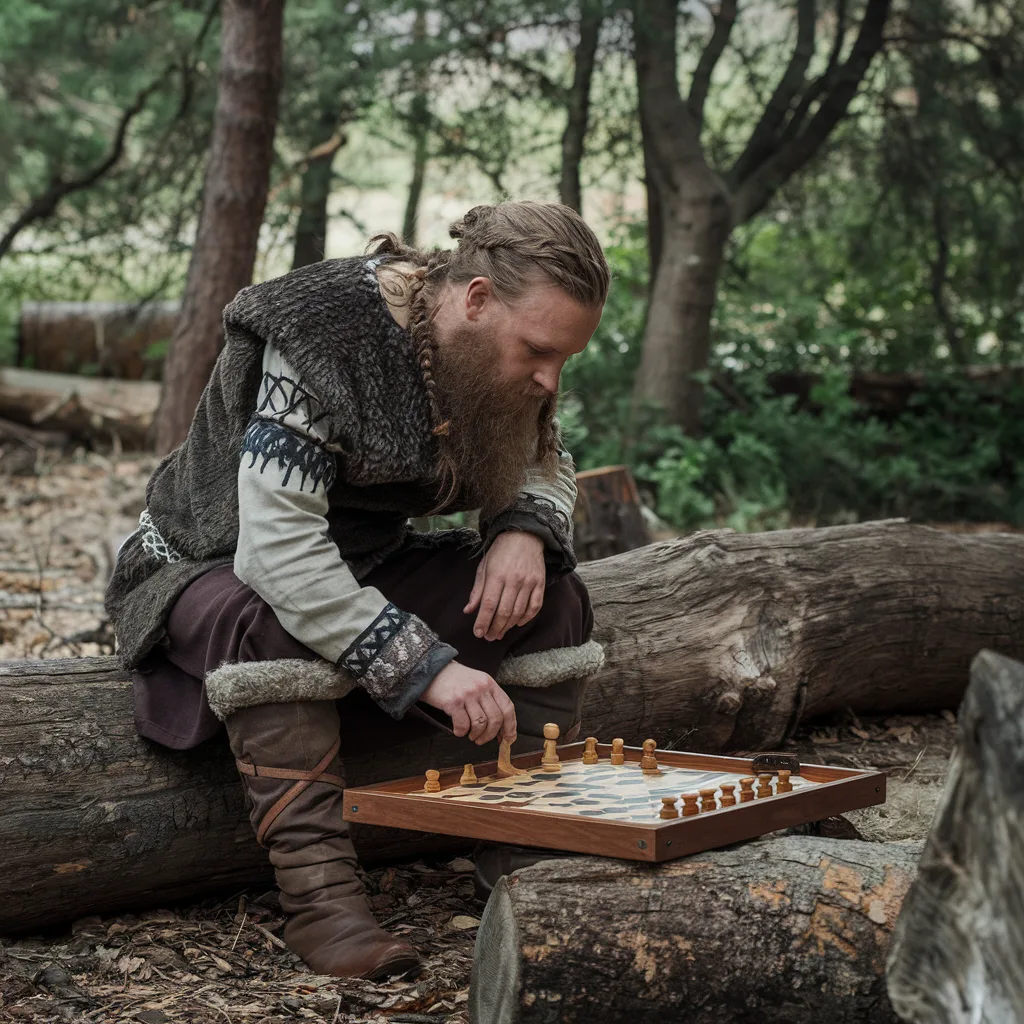
The most popular one was Hnefatafl, commonly known as Tafl. Players can choose to be the king or the attacker. In the game, the king utilizes the defense pieces to protect themselves, while the attackers seek to overthrow the monarch by reaching the opposite corner of the board.
Vikings Didn’t Burn Funeral Boats
Numerous photographs are going around of Vikings burning funeral vessels and dumping them into the sea, however, this did not occur as frequently as we have come to assume.
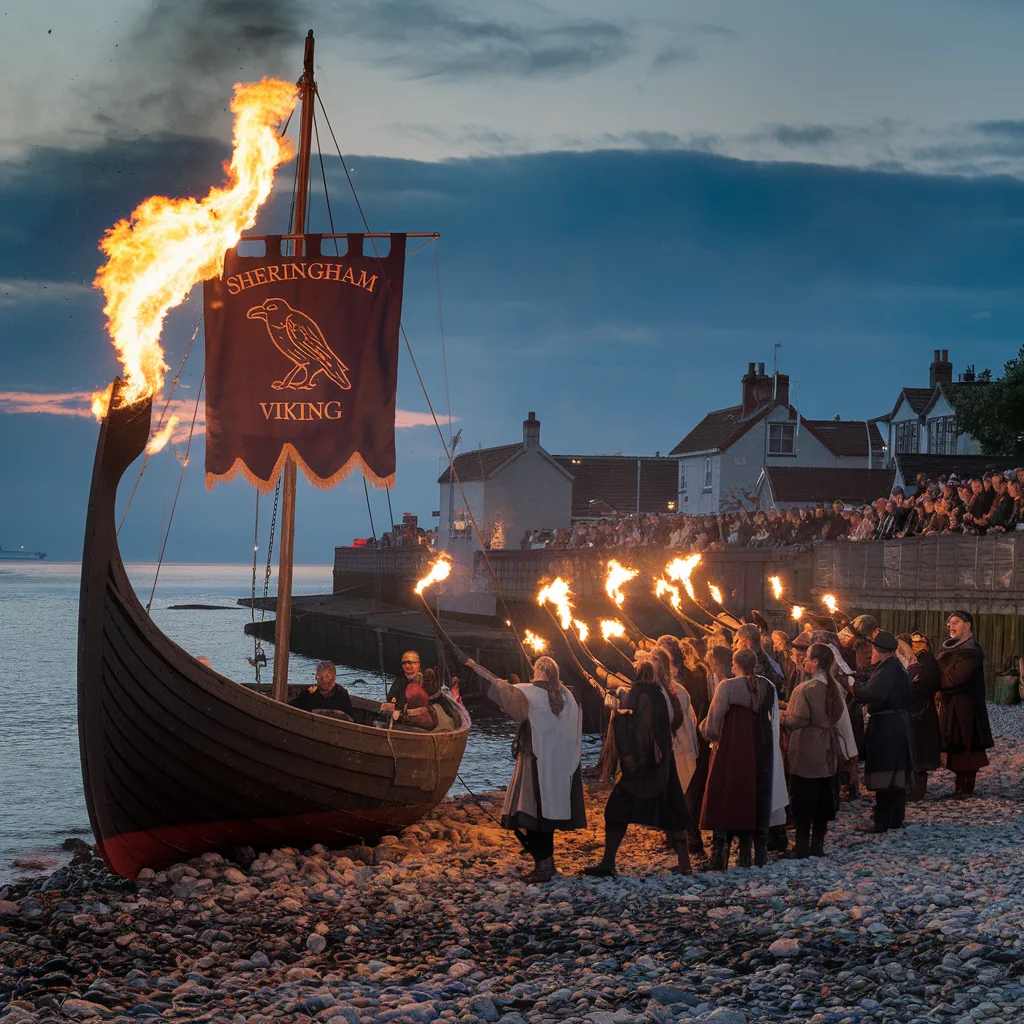
Sure, some Vikings, especially important ones, were cremated in boats, but the boats were usually buried on land and weren’t sent into open water. It’s more likely that many ships set sail and then set on fire from fiery arrows shot from the shores.
Vikings Invented Rap Battles
The Vikings are the last people we’d imagine for developing rap battles, yet even before they were known as combatants, Vikings practiced “flyting”. Flyting is a verbal battle in which poetry is employed to hurl insults. And, like today, nothing was off-bounds.
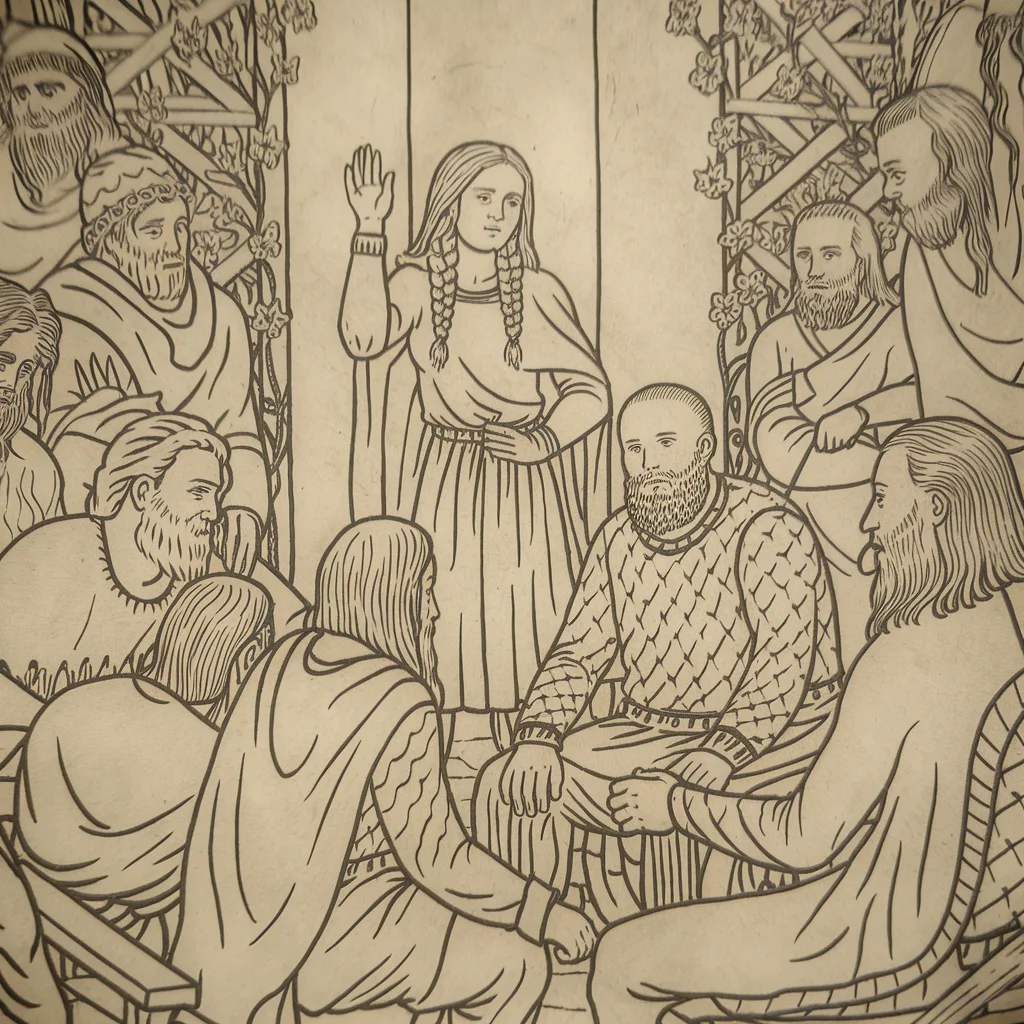
The majority of the time it occurred in Viking feasting halls, and naturally, it featured alcohol. The winner was the person who received the most reactions from the crowd.
The Days of the Week are Named After Viking Gods
We bet you didn’t know that our days of the week are named after Viking gods. Wednesday is named after the mighty raven deity Odin, also known as Woden, and it means “Woden’s Day.” Tuesday and Friday are named after Tyr and Frigg, the gods and goddesses of war and marriage. Thursday is named after the most well-known deity of thunder and power, Thor.
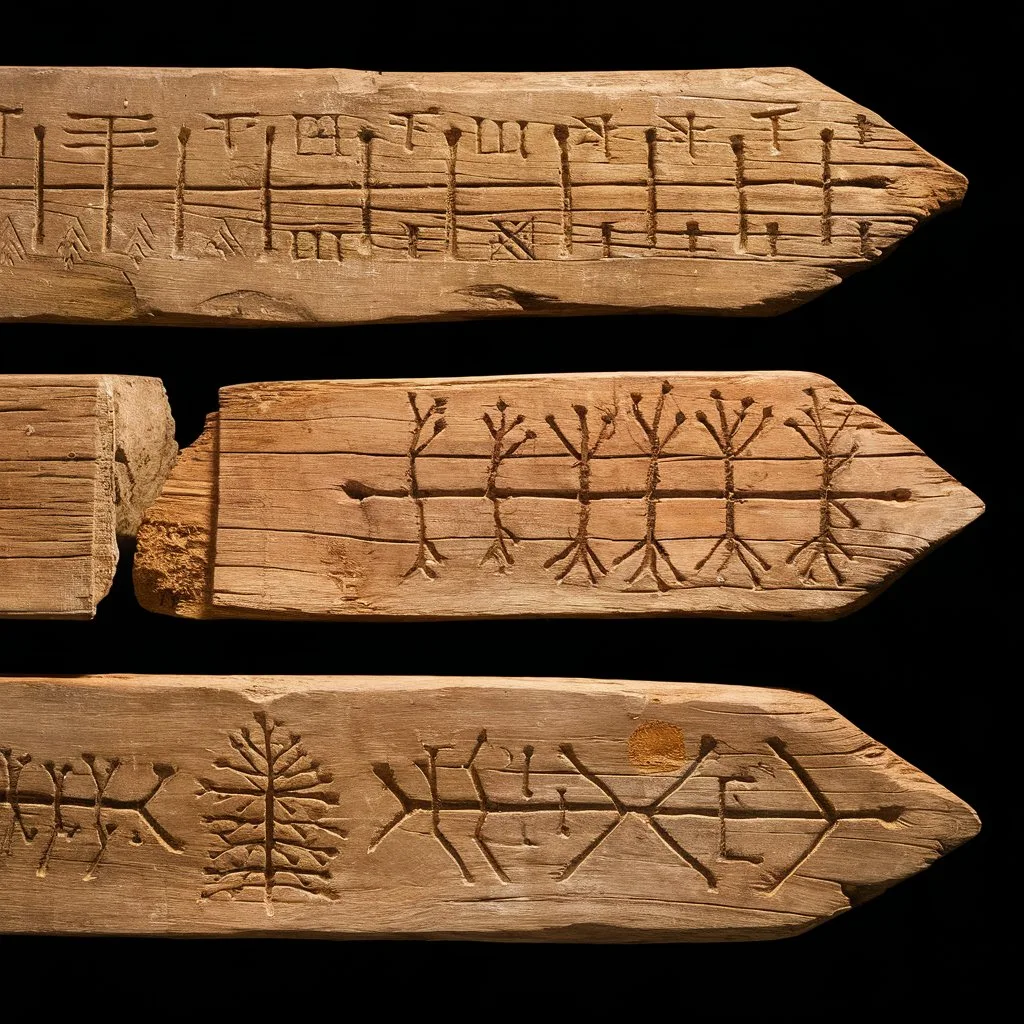
How fantastic is it that pieces of Viking culture are still alive today? And the Vikings’ influence on modern life extends beyond that.
Vikings Had a Complex Justice System
Despite being known for brutality and mercilessness, the Vikings had a well-established legal system in place to settle disputes or crimes. The system was referred to as “Allthing” in Norse culture, which translates to “The Thing.”
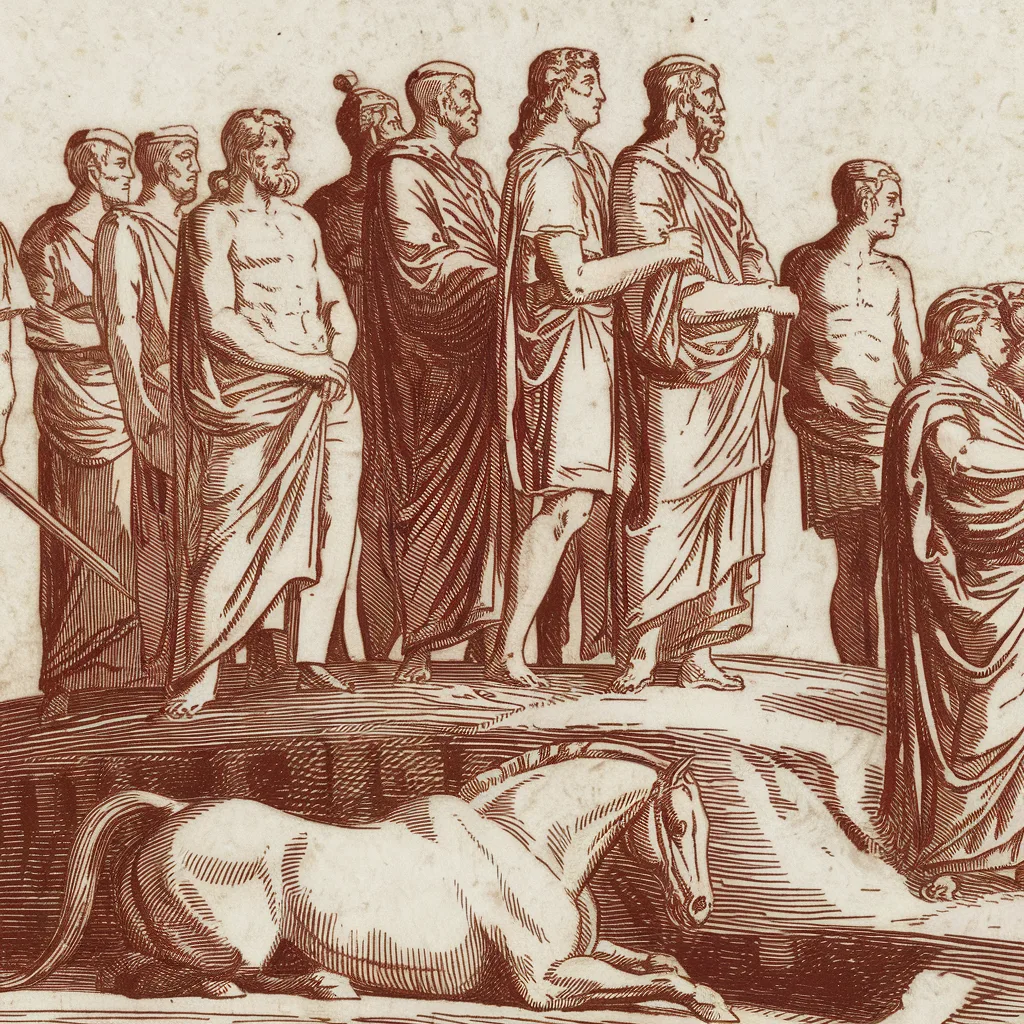
The Thing was an assembly in which a law speaker would listen to people’s conflicts and resolve them peacefully, generally with the help of an objective third party. Sometimes justice was accomplished via violence and execution.
Viking Woman Had Basic Rights
Even while women could not technically be Vikings because the Old Norse word “vikingr” solely refers to men who sailed from Scandinavia in their famed longboats, Viking women had far more freedom than other women of their time.
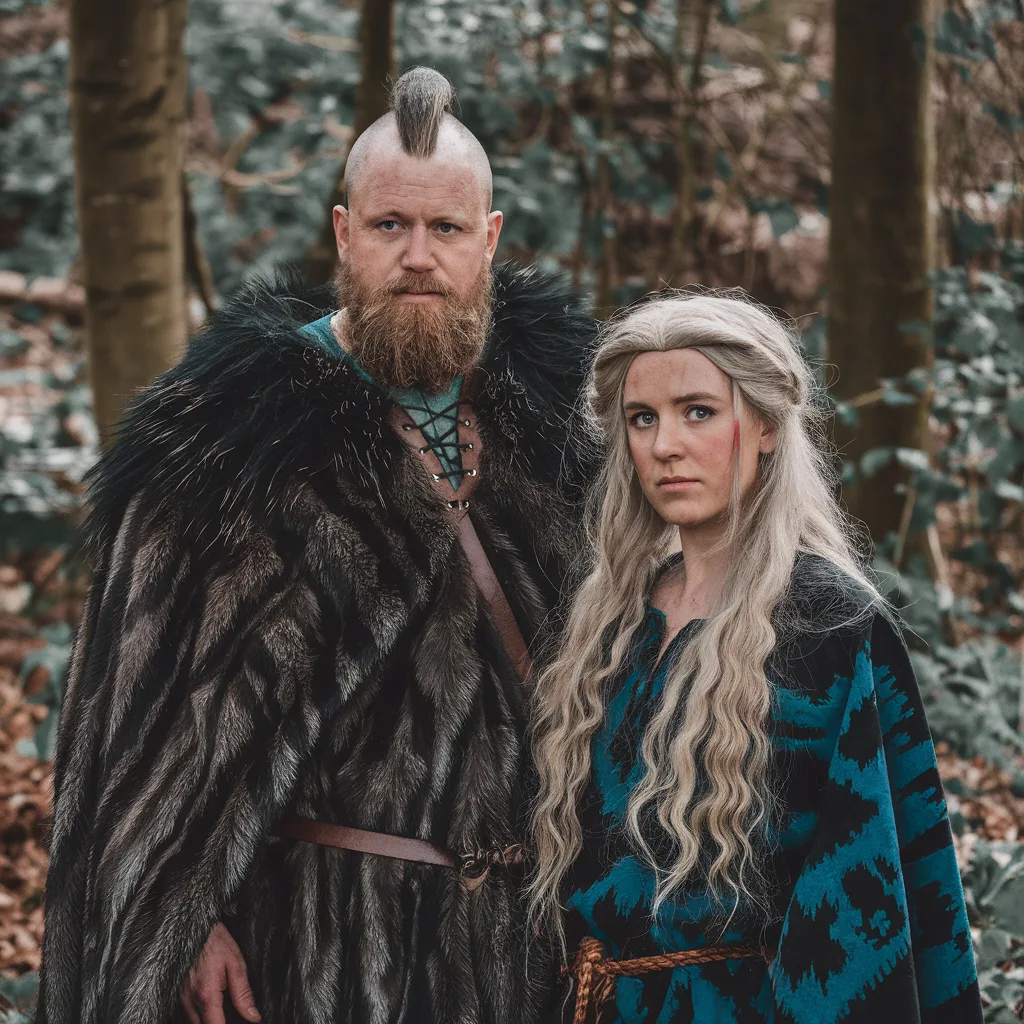
In general, the Vikings observed traditional gender roles, with males hunting, fishing, fighting, farming, and trading, and women cooking and raising children. After their marriages ended, women may inherit property, file for divorce, and retrieve their dowries.
Vikings Had a Unique View of Afterlife
Many current religions believe in the afterlife and heaven or hell, but the Vikings had a very different perspective. They believed that the way they lived determined which afterlife realm they would travel to after they died. The best site to visit was Valhalla.
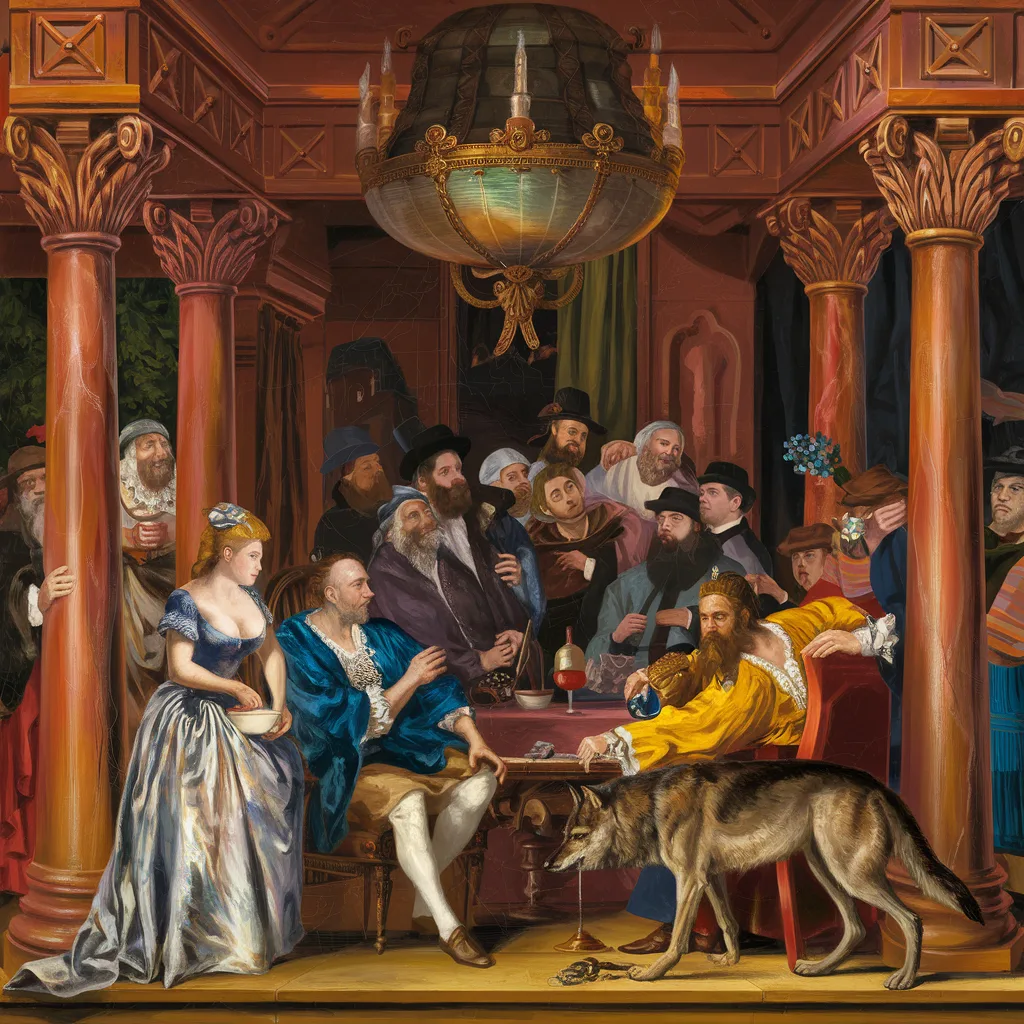
Valhalla was a sacred destination for warriors who had fallen in battle. The next stop was Helgafjell, where admirable people led fulfilling lives. Helheim was for disreputable persons who died in poor health or at an advanced age.
“Harry Potter” is Influenced by Viking Culture
Viking culture affected not only Marvel and Lord of the Rings but also J.K. Rowling’s Harry Potter series.
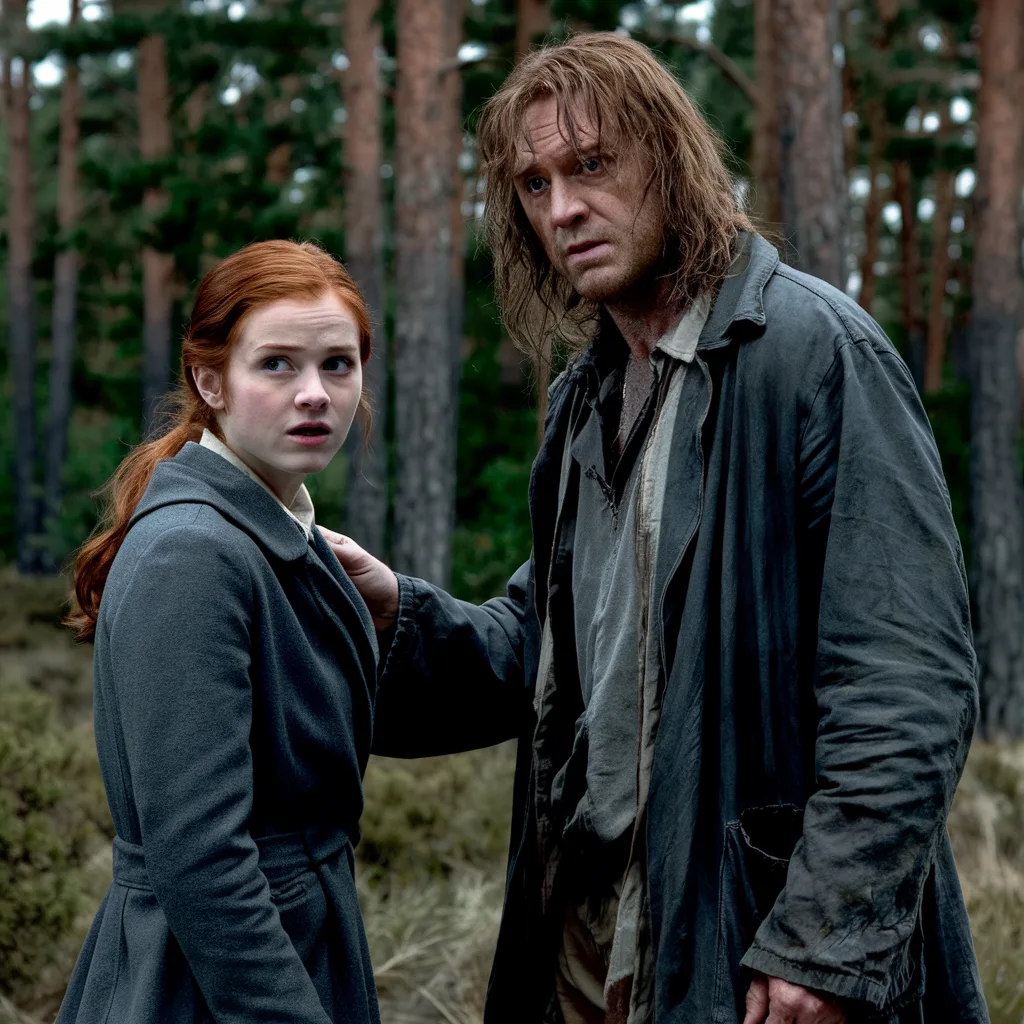
Fenrir Greyback, the werewolf in the Harry Potter books, is named after the big fearsome wolf Fenrir, the son of Loki in Norse mythology. In the literature, he’s a werewolf infamous for being cruel and assaulting children, and the name Greyback is most likely a reference to his greying hair.
Viking Culture Influenced “The Lord of the Rings”
Vikings have inspired numerous TV episodes and movies, including J.R.R. Tolkien’s Lord of the Rings trilogy. The most obvious source of inspiration is the Norse mythology of Andvaranaut, which tells the story of Andvari’s ring, which curses all who wear it.
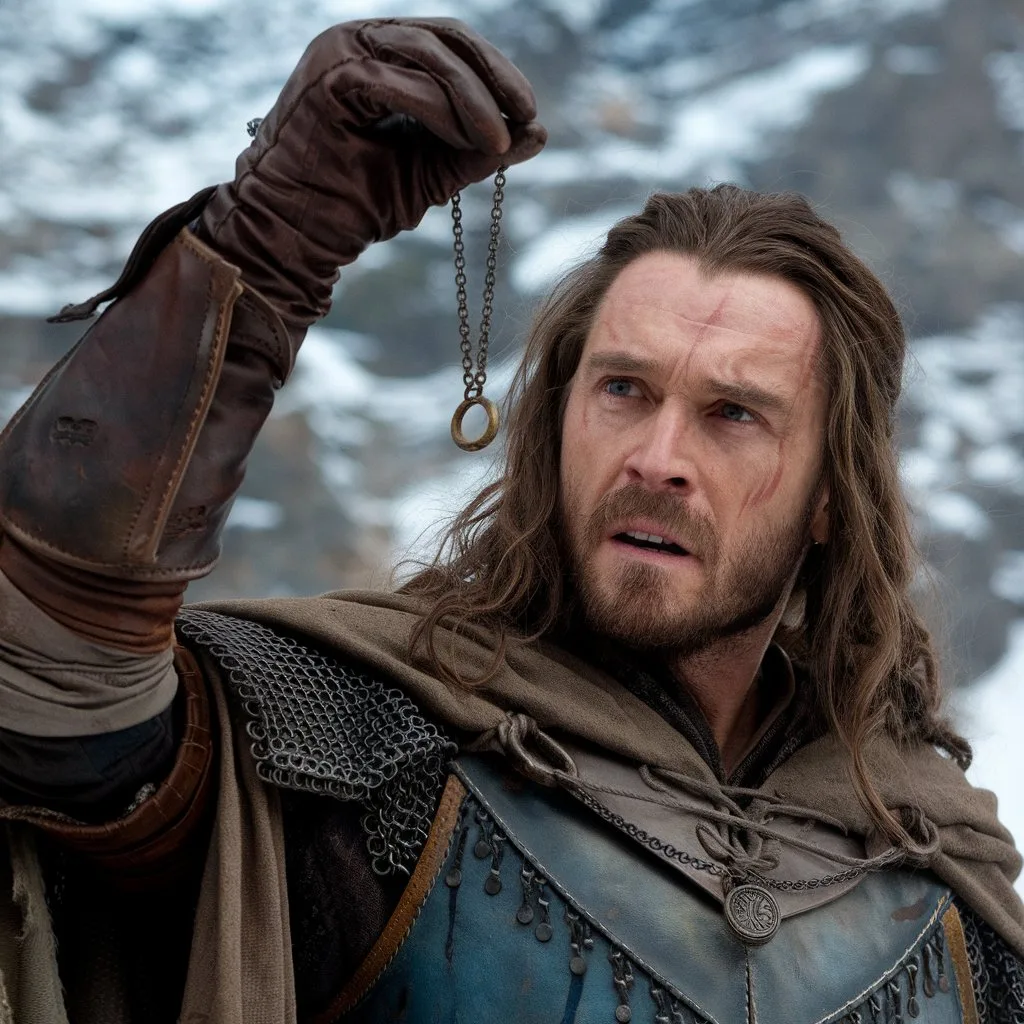
And that isn’t the only influence—the films are set in a realm known as Midgard, which translates to “Middle-Earth” and refers to the world in which humans live. In Norse mythology, Midgard is the world’s wall built by the gods. Furthermore, the elves and dwarves are named after mythological creatures from Old Norse sagas.
6% of the UK Population Have Viking DNA
Vikings are a thing of the past, and they no longer use longboats to invade European villages and towns, yet their genetic heritage lives on. Approximately 6% of the UK people may carry Viking DNA in their genomes!
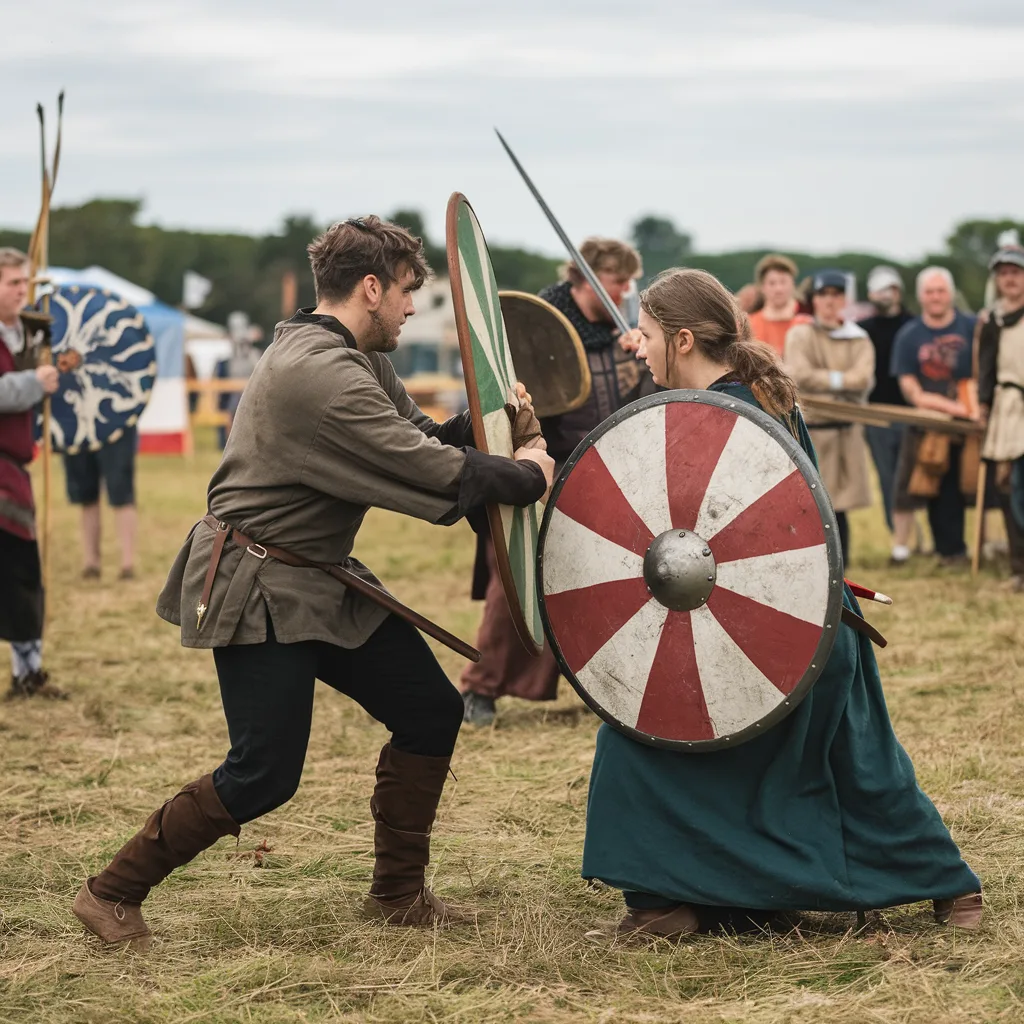
In Sweden, around 10% of the population carries Viking DNA. So the Vikings are still alive, and chances are you know someone with Viking DNA! They may or may not be blonde with blue eyes.
Vikings Were Experts at Making Boats
Ships were an integral part of Viking culture, and most of Viking life revolved around the water. Boats played an important role in their military and invasion success.

Vikings were adept boatbuilders and sailors; they built magnificent ships, the most common of which were longboats that could hold up to 60 Vikings! Longboats are built to float high in the water, making it easier to land and depart from shore.


